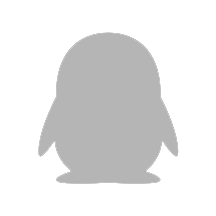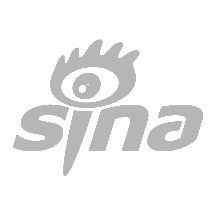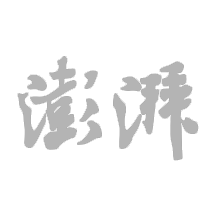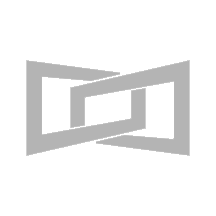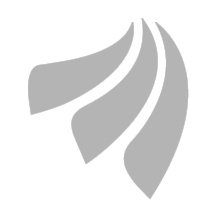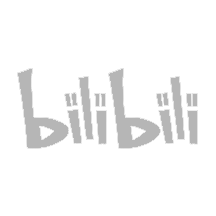北京市高级人民法院侵害著作权案件审理指南
编者按:
4月20日,北京市高级人民法院发布《侵害著作权案件审理指南》(下称《审理指南》)。《审理指南》共计2万余字、十一章,内容包括基本规定、著作权权利客体、权利归属的审查,侵害著作人身权、财产权、邻接权的认定,抗辩事由的审查,法律责任的确定,侵害信息网络传播权、影视作品著作权、计算机软件著作权的认定等。
《审理指南》规定,审理侵害著作权案件,在行使裁量权时,应当加大对著作权的保护力度,鼓励作品的创作,促进作品的传播,平衡各方的利益。
《审理指南》自下发之日起执行,北京市高级人民法院以前发布的有关规定与《审理指南》不一致的,以《审理指南》为准。知产力将邀请北高法官独家一一解读各条款。
目 录
第一章 基本规定1.1【审理原则】
审理侵害著作权案件,在行使裁量权时,应当加大对著作权的保护力度,鼓励作品的创作,促进作品的传播,平衡各方的利益。
1.2【审理内容】
审理侵害著作权案件,一般审查如下内容:原告起诉的案由、受理法院是否具有管辖权、主体是否适格、原告的权利基础及范围、被诉侵权行为、被告抗辩事由是否成立、被告承担民事责任的形式。
1.3【审查案由】
同一案件中,原告既主张侵害著作权又主张侵害商标权、专利权的,可以分案处理,但应当符合有关管辖的法律规定。
1.4【审查案由】
同一案件中,针对同一被诉侵权行为,原告既主张侵害著作权又主张违反反不正当竞争法第二条的,可以一并审理。如果原告的主张能够依据著作权法获得支持,则不再适用反不正当竞争法第二条进行审理。如果原告的主张不能依据著作权法获得支持,在与著作权法立法政策不冲突时,可以依据反不正当竞争法第二条进行审理。
1.5【审查案由】
同一案件中,针对同一主体的多个被诉侵权行为,原告主张部分行为侵害著作权、部分行为构成不正当竞争的,可以根据案件情况决定是否一并审理。
1.6【审查权利客体】
审查原告的权利客体,一般审查如下内容:原告主张保护的是否为作品或者是否为邻接权的客体,该客体是否受到我国著作权法保护。
1.7【专有使用权的认定】
合同约定授予专有使用权的,可以直接认定被许可使用人在合同约定的范围内有权禁止著作权人使用作品,但有相反证据的除外。
合同中使用“独家使用权”等类似表述的,可以根据合同有关条款、合同目的、交易习惯等,结合在案证据认定是否属于专有使用权。
1.8【专有使用权范围与起诉】
著作权人将专有使用权授予他人,对于发生在专有使用权范围内的侵权行为,专有使用权人、著作权人均可以单独起诉,也可以共同起诉;著作权人能够证明存在实际损失,主张损害赔偿的,予以支持。
1.9【被许可使用人的起诉】
被许可使用人根据合同有权在约定范围内禁止他人(不包括著作权人)使用作品的,可以针对侵权行为单独起诉;著作权人已经起诉的,被许可使用人可以申请参加诉讼。
1.10【“授予起诉权利”的审查】
著作权人未将著作权转让或者许可他人,仅授权他人起诉的,不予支持;但对于转让或者许可之前发生的侵权行为,合同有明确约定的,受让人或者被许可使用人单独起诉,可以予以支持。
1.11【签订著作权集体管理合同后的起诉】
签订著作权集体管理合同后,对于侵害合同中约定的著作权权项的行为,著作权人不能提起诉讼,但有证据证明著作权集体管理组织怠于行使权利或者著作权集体管理合同有相反约定的除外。
1.12【一般职务作品的起诉主体】
作者享有著作权的职务作品,职务作品完成两年内,他人未经单位许可,以属于作者所在单位业务范围内的使用方式使用该作品的,作者和所在单位均可以单独起诉;他人未经作者许可,以属于作者所在单位业务范围以外的方式使用作品的,作者可以单独起诉,所在单位可以根据与作者的约定行使诉权;职务作品完成两年后发生侵权行为的,作者可以单独起诉。针对职务作品署名权的起诉主体,适用本指南第4.6条。
1.13【可分割使用的合作作品的起诉主体】
对于可分割使用的合作作品,作者可以单独对其享有著作权部分主张权利。
1.14【不可分割使用的合作作品的起诉主体】
对于不可分割使用的合作作品,如果能够查清权利人基本情况,以全部权利人作为共同原告。明确表示放弃实体权利的权利人,可不予追加;不愿意参加诉讼,又不放弃实体权利的,将其列为共同原告,其不参加诉讼,不影响对案件的审理。如果结合在案证据难以查清权利人基本情况,可以将已查清的部分权利人作为共同原告,但在判决论理部分为未参加诉讼的权利人保留相应的权利份额。
1.15【审查权利范围】
审理侵害著作权案件,一般审查原告主张保护的权利是著作权还是邻接权,并要明确具体权项。
1.16【授权内容的法定性审查】
著作权人授予被许可使用人的权利内容超出著作权法规定的范围,被许可使用人不能以此为依据对外提起侵权之诉。
1.17【违约责任与侵权责任竞合时的起诉】
著作权人授予被许可使用人的权利内容属于著作权法规定的范围,被许可使用人违反合同中关于权利行使方式等约定的,著作权人可以提起侵权之诉。
1.18【侵权责任的认定】
认定被诉侵权行为是否构成侵权、被告是否承担侵权责任,一般审查如下内容:被诉侵权行为的内容、被告是否实施了被诉侵权行为、被告有无过错、是否造成损害、被诉侵权行为与损害之间有无因果关系等。
1.19【涉外案件的审理】
审理侵害著作权案件时,应当根据民事诉讼法的相关规定确定是否属于涉外案件。
对于涉外侵害著作权案件,应当依据民法总则、民法通则、著作权法、民事诉讼法、涉外民事关系法律适用法及相关司法解释等进行审理。
第二章 权利客体的审查
2.1【是否构成作品的审查】
审理侵害著作权案件,需要主动审查原告主张著作权的客体是否构成作品,不能仅根据被告的认可即认定构成作品。
审查原告主张著作权的客体是否构成作品,一般考虑如下因素:
(1)是否属于在文学、艺术和科学范围内自然人的创作;
(2)是否具有独创性;
(3)是否具有一定的表现形式;
(4)是否可复制。
2.2【独创性的认定】
认定独创性,应当考虑如下因素:
(1)是否由作者独立创作完成;
(2)对表达的安排是否体现了作者的选择、判断。
认定表达是否具备独创性与其价值无关。
2.3【创作完成的认定】
作品创作完成,既包括整体的创作完成,又包括局部的创作完成。创作完成的部分能够以某种形式完整表达作者的思想,可以认定该部分属于创作完成的作品。
2.4【简单图形、字母、短语】
简单的常见图形、字母、短语等一般不作为作品给予保护。
2.5【作品标题、人物称谓】
作品标题、人物称谓一般不作为作品给予保护。
2.6【实用艺术作品】
实用艺术作品中具有独创性的艺术美感部分可以作为美术作品受著作权法保护。
专利法、商标法、反不正当竞争法能够提供保护的,不影响当事人对其中具有独创性的艺术美感部分主张著作权法保护。
2.7【建筑作品】
建筑物本身或者建筑物的外部附加装饰具有美感的独创性设计,可以作为建筑作品受著作权法的保护。
建筑材料、建筑方法、功能性设计等不受著作权法保护。
体现建筑作品外观美感的建筑设计图,可以作为美术作品予以保护。
2.8【图形作品】
工程设计图、产品设计图中包含的技术方案、实用功能、操作方法等,以及地图、示意图中包含的客观地理要素、事实等,不受著作权法保护。
仅用于施工的建筑设计图属于工程设计图。
2.9【模型作品】
根据已有作品制作的等比例缩小或者放大的立体模型不属于模型作品。
2.10【新闻报道】
仅包含单纯事实消息的新闻报道,不受著作权法保护。
在单纯事实消息基础上进行了创作,属于作品的,受著作权法保护。
以摄影、绘画、拍摄等非文字方式记录、报道新闻事实,属于作品的,受著作权法保护。
2.11【古籍点校】
对古籍进行校勘、注解而创作出的校勘记、注释等,满足独创性要求的,可以作为作品受著作权法保护。
对古籍仅划分段落、加注标点、补遗、勘误等,应当结合案件情况认定是否作为作品或者作为版式设计受著作权法保护。
2.12【综艺节目视频】
综艺节目视频是否构成作品与现场综艺活动是否构成作品无关。
综艺节目视频符合以类似摄制电影的方法创作的作品构成要件的,受著作权法保护。
2.13【体育赛事节目视频】
体育赛事节目视频是否构成作品与体育赛事活动是否构成作品无关。
体育赛事节目视频符合以类似摄制电影的方法创作的作品构成要件的,受著作权法保护。
2.14【网络游戏】
运行网络游戏产生的静态游戏画面符合美术作品要件的,受著作权法保护。
运行网络游戏产生的连续动态游戏画面,符合以类似摄制电影的方法创作的作品构成要件的,受著作权法保护。
网络游戏可以作为计算机软件受著作权法保护。
2.15【网络游戏组成要素】
网络游戏的组成要素可以单独构成作品,包括但不限于如下情形:
(1)人物形象、服装、道具、地图、场景等可以构成美术作品;
(2)片头、片尾及过场音乐,主题歌、插曲等可以构成音乐作品;
(3)台词、旁白、故事叙述、游戏介绍等可以构成文字作品;
(4)片头、片尾及过场动画、视频等可以构成以类似摄制电影的方法创作的作品。
2.16【表演者权的客体】
无论表演的内容是否相同,表演者对其每次的表演均享有表演者权。
二人以上共同表演,如果属于可以分割使用的表演,表演者可单独对其表演享有表演者权。如果属于不可分割使用的,则表演者对表演共同享有表演者权。
第三章 权利归属的审查
3.1【权属的证明】
在无相反证据的情况下,根据作品的署名推定权利归属。
当事人提供的涉及著作权的底稿、原件、合法出版物、著作权登记证书、认证机构的证明、取得权利的合同、符合行业惯例的权利人声明等可以作为证明权利归属的初步证据。
3.2【署名的识别】
在判断某一署名是否属于作者署名时,应当综合考虑如下因素:作品的性质、作品的类型、作品的表现形式、行业惯例、公众的认知习惯等。
3.3【非真名署名与作者身份的对应】
作者署非真名时,主张权利的当事人对该署名与作者身份之间存在真实对应关系负有举证证明责任。
通过互联网发表的作品,作者署非真名的,主张权利的当事人通过登录帐号等方式能够证明该署名与作者之间存在真实对应关系的,可以推定其为作者。
3.4【临时创作组织作品权属的认定】
编委会等临时创作组织署名的作品,一般认定创作组织成员共同享有著作权,但有相反证据的除外。
3.5【数码照片权属的认定】
当事人提交原始数字文件、出版物等证据证明其权利归属,对方提出异议的,应当综合考虑如下因素:照片发表情况、照片拍摄器材、照片存储设备、电子文件信息等。
3.6【职务作品权属的认定】
法人或者非法人组织根据著作权法第十六条第二款第一项主张职务作品著作权的,应举证证明该作品主要是利用法人或者非法人组织的物质技术条件完成创作的。
3.7【委托作品权属的认定】
对于委托作品的权属,依据委托合同认定。委托合同未约定或者约定不明的,委托作品的著作权由受托人享有。
受托人与委托人对著作人身权的行使进行约定,未违反公序良俗的,不宜一概认定无效,可以根据合同内容进行审查。
3.8【利用民间文学艺术元素或者素材创作的作品权属】
利用民间文学艺术的元素或者素材进行后续创作,形成具有独创性作品的,作者对该作品享有著作权,但应说明素材的来源。
3.9【录音制品的署名】
当事人提供的录音制品明确载明的制作者、录制者或者加注p的民事主体信息,可以作为证明其为录音制作者的初步证据,但有相反证据的除外。
在无其他证据佐证的情况下,不能仅根据录音制品上标注的“提供版权”信息,认定该“提供版权”的主体为录音制作者。
3.10【多重许可、转让的权属判断】
受让人或者被许可使用人通过合同取得约定的著作权或者专有使用权,著作权人在合同约定范围内就相同的权利再次处分的,不予支持。
著作权人对相同权利重复进行转让或者许可的,在能够查清先后顺序的真实情况下,认定在先受让人或者被许可使用人取得著作权或者专有使用权,但有相反证据的除外。
第四章 侵害著作人身权的认定
4.1【发表权与合同约定】
合同仅约定被告行使发表权,但未对发表方式进行约定的,原告主张被告的发表方式侵害发表权的,不予支持。
被告发表作品方式违反合同约定的,原告可以提起违约之诉或者侵权之诉。
4.2【推定发表的情形】
作者将其尚未公开发表的美术作品原件转让给他人,可以推定作者同意受让人以展览方式发表其作品,但双方另有约定的除外。
4.3【发表权属于一次性权利】
即使作品的发表未经著作权人同意,但作品已经公之于众,他人使用该作品,著作权人主张侵害发表权的,不予支持。
4.4【署名权的内容】
作者有权决定在其作品上是否署名、是否署真名。对于该作品的演绎作品,作者享有相同的权利。
作者未在首次发表的作品上署名的,不能视为其放弃署名权。
4.5【署名方式的审查思路】
因署名方式发生的纠纷,判断是否侵害署名权,一般考虑如下因素:
(1)署名方式是否足以使公众知晓作者与作品之间的联系;
(2)署名方式是否符合行业惯例及公众的认知习惯;
(3)作品的类型、特点以及使用方式;
(4)当事人之间是否存在约定。
4.6【职务作品署名权的行使】
职务作品的署名权归作者享有,法人或者非法人组织就侵害署名权的行为提起诉讼的,不予支持。
4.7【使用作品内容与侵害署名权】
判断被告行为是否侵害署名权,应当以被告直接使用作品内容为前提。
4.8【侵害保护作品完整权的判断】
判断是否侵害保护作品完整权,应当综合考虑被告使用作品的行为是否获得授权、被告对作品的改动程度、被告的行为是否对作品或者作者声誉造成损害等因素。
作者将其著作权转让或者许可他人之后,受让人或者被许可使用人根据作品的性质、使用目的、使用方式可以对作品进行合理限度内的改动。
判断是否属于在合理限度内的改动,应当综合考虑作品的类型、特点及创作规律、使用方式、相关政策、当事人约定、行业惯例以及是否对作品或者作者声誉造成损害等因素。
第五章 侵害著作财产权的认定
5.1【复制权控制的行为】
将作品实现从平面到平面、从平面到立体、从立体到平面、从立体到立体的再现,未付出独创性劳动的,属于复制。
按照建筑设计图建造建筑作品,属于复制。
按照工程设计图或者产品设计图施工或者生产不受著作权法保护的工程或者产品,不属于复制。
未经许可复制他人作品但未发行或者以其他方式传播的,构成侵害复制权,但法律另有规定的除外。
5.2【发行权控制的行为】
发行权控制的是以出售、赠与方式向公众提供作品原件或者复制件的行为,不要求以营利为目的。
5.3【发行权的用尽】
作品原件和经授权合法制作的作品复制件经著作权人许可,首次以销售或者赠与方式转让所有权后,他人对该特定原件或者复制件再次发行的,不构成侵害发行权。
5.4【侵害专有出版权的认定】
未经许可出版他人享有专有出版权的作品的全部或者主要部分的,或者虽然排列顺序有所变化但作品内容相同或者实质性相似的,构成侵害专有出版权。
5.5【出版者合理注意义务的判断】
判断出版者是否尽到合理注意义务,应当综合考虑原告主张保护的作品知名度、被诉侵权出版物类型、二者的相似程度、被诉侵权内容在原告主张保护的作品或者被诉侵权作品中所占比例等因素。
5.6【出版者未尽到合理注意义务的判断】
具有下列情形之一的,可以根据案件情况认定出版者未尽到合理注意义务:
(1)出版合同中的被诉侵权作品的作者姓名与出版物实际署名不一致;
(2)被诉侵权作品属于演绎作品,出版者在签订合同时没有审查作者是否得到原作品著作权人的授权;
(3)被诉侵权作品中有大量内容与在先发表的具有较高知名度作品相同;
(4)其他可以认定出版者未尽到合理注意义务的情形。
5.7【出版者尽到合理注意义务的判断】
具有下列情形之一的,可以根据案件情况认定出版者尽到了合理注意义务:
(1)出版社经作者授权出版被诉侵权作品,但该作品的专用出版权事前已经转让或者许可他人使用且尚未出版发行,出版者对此不知情的;
(2)作者事前未告知出版者其作品属于演绎作品且原作品未发表,出版者无法判断该作品是否属于演绎作品;
(3)被诉侵权作品属于职务作品或者合作作品,作者事前未将创作过程如实告知出版者,出版者无其他途径知晓创作过程,无法判断该出版物是否属于职务作品或者合作作品;
(4)被诉侵权作品的授权链条完整,授权者身份及授权文件真实、合法;
(5)其他可以认定出版者尽到合理注意义务的情形。
5.8【表演权控制的行为】
表演权控制的行为包括现场表演和机械表演。前者是指表演者直接向现场观众表演作品的行为;后者是指通过机器设备等手段向公众传播作品的表演的行为,但下列情形不属于(机械)表演权控制的范围,可以适用著作权法其他规定予以调整:
(1)广播电台、电视台以无线方式传播对作品的表演或者后续的以无线或者有线方式转播该表演;
(2)通过互联网以交互式手段传播作品的表演;
(3)放映电影作品或者以类似摄制电影方法创作的作品等。
5.9【放映权控制的行为】
通过放映机、幻灯机等技术设备公开再现美术、摄影、电影和以类似摄制电影方法创作的作品等属于放映行为。
被告未经许可将来源于信息网络的电影等作品,通过放映机等设备向现场观众进行公开再现的,构成侵害放映权的行为,但法律另有规定除外。
5.10【广播权控制的行为】
广播权控制的行为包括:
(1)以无线方式传播作品的行为;
(2)以无线或者有线转播的方式传播广播的作品的行为;
(3)通过扩音器等类似工具向公众传播广播的作品的行为。
以有线方式直接传播作品,不属于广播权控制的行为,可以适用著作权法其他规定予以调整。
5.11【广播权与广播组织权】
广播权的权利主体是作品著作权人,广播组织权的权利主体是广播电台、电视台。
5.12【改编权控制的行为】
作者未经许可在被诉侵权作品中使用了原作品的表达,并创作出具有独创性的新作品,属于改编行为。
作者仅使用了原作品中不具有独创性的表达,原作品著作权人主张构成侵害改编权的,不予支持。
5.13【改编与作品体裁】
侵害改编权不以作品体裁、类型的变化为要件。未经许可,将他人作品改编为相同体裁的作品,可以依据本指南第5.12条的规定认定是否侵害改编权。
5.14【改编与复制】
作者未经许可在被诉侵权作品中使用了原作品的表达,但并未形成新的作品,属于复制行为。原作品著作权人主张构成侵害改编权的,不予支持。
5.15【改编作品权属和权利行使】
在原作品基础上再创作形成的改编作品,著作权由改编者享有。改编者有权禁止他人使用改编作品。
改编者行使其著作权应当取得原作品著作权人许可。他人使用改编作品应当同时取得改编作品著作权人和原作品著作权人许可。
5.16【汇编权】
汇编权属于被汇编作品的著作权人,而不是汇编作品的汇编者。
5.17【汇编权控制的行为】
将作品或者作品的片段等通过选择、编排汇集成新作品属于汇编行为。
5.18【“兜底”条款的适用】
适用著作权法第十条第一款第十七项规定的“由著作权人享有的其他权利”时,一般考虑如下因素:
(1)是否可以将被诉侵权行为纳入著作权法第十条第一款第一项至第十六项的保护范围;
(2)对被诉侵权行为若不予制止,是否会影响著作权法已有权利的正常行使;
(3)对被诉侵权行为若予以制止,是否会导致创作者、传播者和社会公众之间的重大利益失衡。
第六章 侵害邻接权的认定
6.1【表明表演者身份的方式】
表明表演者身份的方式应当体现表演者与其表演之间的联系。当事人对于表明表演者身份的方式发生争议的,一般考虑表演活动的特点、传播方式以及相关行业惯例等因素。
下列情形可以认定表明了表演者的身份:
(1)在演出广告、宣传栏、节目单或者文艺刊物刊登的剧照上标明表演者姓名(名称);
(2)在节目表演前后,由主持人介绍表演者的姓名(名称);
(3)广播电台、电视台播报表演者的姓名(名称);
(4)以屏幕上的字幕形式标明表演者的姓名(名称)。
6.2【电影作品与表演者权】
电影作品和以类似摄制电影的方法创作的作品中,表演者就其在作品中的表演主张财产性权利的,不予支持。
6.3【录音录像制作者权】
除法律另有规定外,未经许可使用他人受著作权法保护的作品制作录音录像制品,构成侵害著作权;未经该录音录像制作者许可使用该录音录像制品的,构成侵害录音录像制作者权。
被告未经许可翻录他人制作的录音制品,或者在翻录基础上编辑制作新的录音制品进行发行的,既侵害了相关的表演者权,也侵害了被翻录制品的录音制作者权。
6.4【音源同一性的证明】
当事人对于被诉侵权的录音制品是否来源于原告主张权利的录音制品发生争议的,原告应当举证证明双方录音制品音源相同。
原告举证证明双方的录音制品中的表演者、词曲、编曲等因素相同的,可以认定音源同一,但有相反证据的除外。
6.5【广播组织的转播权】
广播组织享有的转播权可以控制以有线和无线方式进行的转播,但是不能控制通过互联网进行的转播。
6.6【版式设计权保护范围】
被告使用了与原告相同或者基本相同的版式设计,出版同一作品的,构成侵害版式设计权。
将图书、报刊扫描复制后在互联网上传播的,构成侵害版式设计权。
第七章 抗辩事由的审查
7.1【抗辩事由的内容】
被告提出的抗辩事由一般包括如下情形:
(1)原告主张权利的客体不属于著作权法第三条规定的作品;
(2)原告主张权利的客体属于著作权法第五条规定的情形;
(3)原告主张的权利超过法定保护期;
(4)原告或者被告主体不适格;
(5)被诉侵权行为不属于原告主张的权利控制范围;
(6)被诉侵权作品创作有合法来源;
(7)被告使用原告的作品具有合法授权;
(8)被诉侵权行为属于合理使用或者法定许可的情形;
(9)其他情形。
7.2【抗辩事由的审查原则】
对于第7.1条规定的抗辩事由第(1)项至第(5)项,无论被告是否提出,均应予以审查。
7.3【有限表达】
被告能够举证证明被诉侵权作品由于表达方式极为有限而与原告主张权利的作品表达相同或者实质性相似的,可以认定有限表达抗辩成立。
7.4【必要场景】
被告能够举证证明被诉侵权作品与原告作品表达相同或者实质性相似系因表达某一主题必须描述某场景或者使用某场景的设计造成的,可以认定必要场景抗辩成立。
7.5【时事新闻】
原告能够举证证明其在单纯事实消息的基础上进行了创作并形成了作品,被告主张原告作品属于时事新闻,不受著作权法保护的,不予支持。
7.6【公有领域】
被告能够举证证明被诉侵权作品与原告作品存在相同或者实质性相似的表达部分来源于公有领域的,可以认定公有领域合法来源抗辩成立。
7.7【在先其他作品】
被告能够举证证明被诉侵权作品与原告作品存在相同或者实质性相似的表达部分来源于在先的其他作品,可以认定在先其他作品合法来源抗辩成立。
7.8【独立创作】
被告能够举证证明被诉侵权作品与原告作品虽存在相同或者实质性相似的表达部分,但属于对同一题材独自创作的巧合,可以认定独立创作抗辩成立。
7.9【合法授权】
被告能够举证证明其使用作品已经获得合法授权的,可以认定合法授权抗辩成立。
7.10【个人使用】
被告未经许可通过信息网络向他人提供作品,其提出属于“为个人学习、研究或者欣赏使用他人已发表作品”的合理使用抗辩,不予支持。
7.11【适当引用】
判断被诉侵权行为是否属于适当引用的合理使用,一般考虑如下因素:
(1)被引用的作品是否已经发表;
(2)引用目的是否为介绍、评论作品或者说明问题;
(3)被引用的内容在被诉侵权作品中所占的比例是否适当;
(4)引用行为是否影响被引用作品的正常使用或者损害其权利人的合法利益。
7.12【课堂教学和科研使用】
未经许可以营利为目的,在面向社会公众开展的教育培训中翻译或者复制他人已发表作品的,被告主张属于著作权法第二十二条第一款第六项规定的合理使用情形的,不予支持。
7.13【报刊转载、摘编】
被诉行为不属于报刊之间的转载、摘编的,或者虽属于报刊之间的转载、摘编但未能注明被转载、被摘编作品的作者和最初登载的出处,或者未按规定支付报酬的,被告主张法定许可抗辩,不予支持。
7.14【制作录音制品】
被告能够举证证明被诉侵权行为属于将他人已经合法录制为录音制品的音乐作品用于制作录音制品,且支付了报酬,被告主张法定许可抗辩的,予以支持,但有证据证明著作权人已声明不得使用其音乐作品制作录音制品的除外。
第八章 法律责任的确定
8.1【停止侵害的例外】
如果被告停止被诉侵权行为可能有悖公序良俗,或者违反比例原则的,可以不判令停止侵害,宜根据案件情况从高确定赔偿数额或者判令被告支付相应的对价。
8.2【过错原则】
被告承担损害赔偿责任,应当以被告存在过错为前提。
8.3【赔偿数额的确定原则】
确定赔偿数额应当以能够弥补权利人因侵权而受到的损失为原则,但法律另有规定的除外。
被告仅侵害著作人身权的,一般不判令承担损害赔偿责任。
8.4【赔偿数额的确定方法及适用顺序】
确定损害赔偿数额应当遵循权利人的实际损失、侵权人的违法所得、法定赔偿的顺序。
无法精确计算权利人的实际损失或者侵权人的违法所得时,可以根据在案证据裁量确定赔偿数额,该数额可以高于法定赔偿最高额。
无法精确计算权利人的实际损失或者侵权人的违法所得,也无法以合理方法裁量确定赔偿数额的,应适用法定赔偿确定数额。
8.5【权利人的实际损失】
计算“权利人的实际损失”可以依据如下方法:
(1)侵权行为使权利人实际减少的正常情况下可以获得的利润,但权利人能够举证证明其获得更高利润的除外;
(2)侵权行为直接导致权利人的许可使用合同不能履行或者难以正常履行,从而产生的预期利润损失;
(3)参照国家有关稿酬规定计算实际损失;
(4)合理的许可使用费;
(5)权利人因侵权行为导致复制品销售减少的数量乘以单位利润之积;
(6)侵权复制品销售数量乘以权利人销售复制品单位利润之积;
(7)其他方法。
8.6【侵权人的违法所得】
通常依据侵权人因侵权行为获得的利润计算“侵权人的违法所得”。若在案证据证明侵权人存在明显侵权恶意、侵权后果严重的,可以直接依据因侵权行为所获得的营业收入计算其违法所得。
8.7【举证妨碍】
权利人的实际损失难以确定,但权利人就侵权人的违法所得提供了初步证据,而在与侵权行为相关的账簿、资料主要由侵权人掌握的情况下,可以责令侵权人提供与侵权行为相关的账簿、资料;侵权人不提供或者提供虚假的账簿、资料的,可以根据权利人的主张和提供的证据认定侵权所得的数额。
8.8【裁量确定赔偿数额】
按照权利人的实际损失、侵权人的违法所得均无法精确计算赔偿数额,裁量确定赔偿数额时,除根据当事人提交的证据外,还可以考虑如下因素:
(1)原告主张权利的作品市场价格、发行量、所在行业正常利润率;
(2)侵权商品的市场价格、销售数量、所在行业正常利润率以及作品对商品售价的贡献率;
(3)原告主张权利的作品类型、所在行业的经营主体盈利模式,如互联网流量、点击率、广告收入等对损害赔偿的影响;
(4)其他因素。
8.9【法定赔偿的考量因素】
确定“法定赔偿”数额,一般考虑如下因素:
(1)作品的类型、作品知名度和市场价值、权利人的知名度、作品的独创性程度等;
(2)被告的主观过错、侵权方式、时间、范围、后果等;
(3)其他因素。
8.10【恶意侵权】
适用法定赔偿时,被告具有下列情形之一的,可以在法定赔偿额限度内支持原告的赔偿请求或者从高确定赔偿数额:
(1)以同样的方式针对同一作品多次侵权;
(2)明知经营行为涉及大量侵权作品、表演、录音录像制品,仍实施、放任或者鼓励侵权行为;
(3)其他情形。
8.11【合理开支】
合理开支包括:
(1)律师费;
(2)公证费及其他调查取证费;
(3)审计费;
(4)差旅费;
(5)诉讼材料印制费;
(6)原告为制止侵权支付的其他合理费用。
8.12【合理开支的证明】
原告请求赔偿合理开支的,应当提交合同、票据等相应证据。经审查能够确定相关支出已经实际发生且具有合理性和必要性的,原告虽未能提交充分证据予以证明,也可以纳入赔偿范围。
8.13【赔偿合理开支】
被告应当赔偿原告为制止侵权支出的合理开支,该项内容应在损失赔偿数额之外单独列出。
适用法定赔偿方法确定赔偿数额的,被告应当赔偿原告为制止侵权支出的合理开支,不计入法定赔偿数额之内。
8.14【律师费】
确定律师费的支持数额,可以考虑实际支付的律师费数额、委托代理合同相关约定、案件专业性及难易程度、律师工作量、裁判结果等因素。
被告应当承担损害赔偿责任的,可以根据赔偿请求被支持的情况酌情确定计入合理开支的律师费数额。
被告不承担损害赔偿责任,但应承担停止侵害、赔礼道歉等民事责任的,可以根据原告诉讼请求被支持的情况酌情确定计入合理开支的律师费数额。
8.15【赔礼道歉的适用条件】
侵害著作人身权或者表演者人身权的,可以判令被告承担赔礼道歉的民事责任。
确定赔礼道歉方式、范围,应当考虑著作人身权受侵害的方式、程度等因素,并应当与侵权行为造成损害的影响范围相适应。
侵权行为情节轻微的,可以判令被告书面道歉;被告在诉讼中已主动道歉并记录在案的,可以不再判令其赔礼道歉。
8.16【精神损害赔偿的适用原则】
侵害著作人身权或者表演者人身权,造成严重精神损害,且适用停止侵害、消除影响、赔礼道歉仍不足以抚慰的,可以判令被告支付精神损害抚慰金。
法人或者非法人组织主张赔偿精神损害的,一般不予支持。
8.17【精神损害抚慰金数额的确定】
被告应当承担精神损害赔偿责任的,可以根据原告遭受精神损害的程度、被告侵权的主观过错、侵权方式、侵权情节、影响范围等因素综合确定精神损害抚慰金数额。
第九章 侵害信息网络传播权的认定
9.1【侵害信息网络传播权行为】
在侵害信息网络传播权案件中,应当将被诉侵权行为区分提供内容(作品、表演、录音录像制品)行为和提供技术服务行为。
9.2【原告举证责任】
原告主张被告单独或者与他人共同实施了提供作品、表演、录音录像制品行为的,应当承担举证证明责任。
原告初步举证证明通过被告网站能够播放、下载或者以其他方式获得涉案作品、表演、录音录像制品,被告仍主张其未实施提供内容行为的,由被告承担相应的举证证明责任。
原告可以采取公证等方式举证证明被告网站内容,但应保证其取证步骤及相关网页的完整性。
9.3【被告举证责任】
被告主张其仅提供自动接入、自动传输、信息存储空间、搜索、链接、文件分享技术等网络技术服务的,应承担举证证明责任,被告未提供充分证据证明其系仅提供自动接入、自动传输、信息存储空间、搜索、链接、文件分享技术等技术服务的,对其前述主张不予支持。
被告应当就涉案作品、表演、录音录像制品的提供主体或者其与提供主体之间的关系提供相应证据。被告未提交充分证据证明,但原告已经初步举证的情况下,被告主张未实施提供内容行为的,不予支持。
9.4【被诉侵权行为的查明】
查明被诉侵权行为,可以采取勘验的方式;对于被诉侵权行为性质,应根据在案证据,运用逻辑推理和经验法则等综合进行判断。
9.5【全面审查】
原告在起诉时未明确主张被告行为属于直接侵害信息网络传播权行为,还是属于为他人实施侵害信息网络传播权行为提供教唆、帮助,且在法庭辩论终结前仍未明确的,应根据在案证据对被告实施的行为性质进行全面审查。
9.6【直接侵权】
未经许可单独或者以分工合作方式共同提供作品、表演、录音录像制品的行为,属于直接侵害信息网络传播权的行为。
各被告之间或者被告与他人之间具有共同提供涉案作品、表演、录音录像制品的主观意思联络,且为实现前述主观意思联络客观上实施了相应行为的,可以认定构成前款所规定情形。
9.7【分工合作】
各被告之间或者被告与他人之间存在体现合作意愿的协议等证据,或者基于在案证据能够证明各方在内容合作、利益分享等方面紧密相联的,可以认定各方具有共同提供涉案作品、表演、录音录像制品的主观意思联络,但被告能够证明其根据技术或者商业模式的客观需求,仅提供技术服务的除外。
9.8【教唆、帮助侵权】
被告作为技术服务提供者构成教唆、帮助侵权的,应当以存在直接侵权行为为前提条件。
9.9【教唆、帮助侵权的过错】
被告实施教唆、帮助行为应承担侵权责任的,主观上应当具有“明知”或者“应知”的主观过错。“明知”指实际知道侵权行为存在;“应知”指因存在着明显侵权行为的事实,应当意识到侵权行为的存在。
上述过错的判断应当以网络服务提供者的预见能力和预见范围为基础,又要区别通常预见水平和专业预见水平等情况。
9.10【提供信息存储空间服务的认定】
被告主张提供信息存储空间服务的,一般综合下列因素予以认定:
(1)被告提供的证据可以证明其网站具备为服务对象提供信息存储空间服务的功能;
(2)被告网站中的相关内容明确标示了为服务对象提供信息存储空间服务;
(3)被告能够提供上传者的用户名、注册IP地址、注册时间、上传IP地址、联系方式以及上传时间、上传信息等证据;
(4)其他因素。
9.11【信息存储空间服务提供者“应知”的判断】
信息存储空间服务提供者同时符合下列条件的,可以认定其具有“应知”的过错:
(1)能够合理地认识到涉案作品、表演、录音录像制品在其存储空间传播;
(2)能够合理地认识到网络用户未经权利人的许可提供涉案作品、表演、录音录像制品。
9.12【信息存储空间服务提供者“应知”的判断】
有以下情形之一的,可以推定信息存储空间服务提供者“能够合理地认识到涉案作品、表演、录音录像制品在其存储空间传播”,但有相反证据的除外:
(1)涉案作品、表演、录音录像制品或者与其相关的信息位于首页、各栏目首页或者其他主要页面等可被明显感知的位置;
(2)对涉案作品、表演、录音录像制品的主题或者内容主动进行选择、编辑、修改、整理、推荐或者为其设立专门排行榜的;
(3)其他情形。
9.13【信息存储空间服务提供者“应知”的判断】
有以下情形之一的,可以推定信息存储空间网络服务提供者“能够合理地认识到网络用户提供涉案作品、表演、录音录像制品未经权利人的许可”,但有相反证据的除外:
(1)网络用户提供的是专业制作且内容完整的影视作品、音乐作品、表演、录音录像制品,或者处于热播、热映期间的影视作品、知名度较高的其他作品以及相关的表演、录音录像制品;
(2)网络用户提供的是正在制作过程中且按照常理制作者不可能准许其传播的影视作品、音乐作品、表演、录音录像制品;
(3)其他明显的侵权事实。
9.14【提供链接服务行为的认定】
被告能够举证证明存在以下情形之一的,可以初步认定其提供的是链接服务:
(1)涉案作品、表演、录音录像制品的播放是自被告网站跳转至第三方网站进行的;
(2)涉案作品、表演、录音录像制品的播放虽在被告网站进行,但其提供的证据足以证明涉案作品、表演、录音录像制品置于第三方网站的;
(3)其他情形。
单独依据播放画面的水印或者影片介绍中播放来源的图标、文字等,不宜认定被告实施的是链接服务行为。
9.15【链接服务提供者“应知”的判断】
有下列情形之一的,可以认定链接服务提供者具有“应知”的过错:
(1)链接服务提供者对被链接的涉案作品、表演、录音录像制品进行了主动的选择、编辑、推荐,公众可以在设链网站上可以直接下载、浏览或者其他方式获得的;
(2)链接服务提供者设置定向链接,且被链接网站未经许可提供涉案作品、表演、录音录像制品侵权行为明显的;
(3)其他情形。
9.16【通过破坏或者避开技术措施设置链接的行为】
对于通过破坏或者避开技术措施设置链接的行为,原告依据著作权法第十条第一款第十二项主张权利的,可以根据案件情况予以支持。
9.17【侵权责任法第三十六条与避风港条款的关系】
侵权责任法第三十六条第二款、第三款属于网络服务提供者的侵权责任构成要件条款。
不符合信息网络传播权保护条例第二十条、第二十一条、第二十二条、第二十三条关于网络服务提供者侵权损害赔偿责任免责条款的,还应当根据侵权责任法第三十六条判断网络服务提供者是否应当承担相应的侵权责任。
9.18【“改变”的理解】
信息网络传播权保护条例第二十二条规定所称“改变”,是指对服务对象提供的作品、表演、录音录像制品的内容进行了改变。
下列行为不应视为对服务对象提供的作品、表演、录音录像制品进行了改变:
(1)仅对作品、表演、录音录像制品的存储格式进行了改变;
(2)对作品、表演、录音录像加注数字水印等网站标识;
(3)在作品、表演、录音录像之前或者结尾处投放广告以及在作品、表演、录音录像中插播广告。
9.19【直接获得经济利益的理解】
网络服务提供者因提供信息存储空间服务,按照时间、流量等向用户收取标准服务费用的,不属于信息网络传播权保护条例第二十二条第四项所称的“从服务对象提供作品、表演、录音录像制品中直接获得经济利益”。
网络服务提供者因提供信息存储空间服务而收取的一般性广告费,不认定为直接获得的经济利益。
9.20【链接服务提供者进入避风港的要件】
根据信息网络传播权保护条例第二十三条,免除提供搜索、链接服务的网络服务提供者的损害赔偿责任,应当同时具备以下两个条件:
(1)对被链接的作品、表演、录音录像制品是否侵权不“明知”并且不“应知”;
(2)接到权利人的通知后,及时断开与侵权作品、表演、录音录像制品的链接。
9.21【通知的认定】
权利人提交的通知应符合信息网络传播权保护条例第十四条的规定。
权利人提交的通知未包含被诉侵权的作品、表演、录音录像制品的网络地址,但网络服务提供者根据该通知提供的信息对被诉侵权的作品、表演、录音录像制品能够足以准确定位的,可以认定权利人发出了通知。
对被诉侵权的作品、表演、录音录像制品是否能够足以准确定位,应当考虑网络服务提供者提供的服务类型、权利人要求删除或者断开链接的文字作品或者表演、录音录像制品的文件类型以及作品、表演、录音录像制品的名称是否具有特定性等具体情况认定。
9.22【网页快照行为的认定】
网络服务提供者在提供搜索服务时以快照形式在其服务器上生成作品、表演、录音录像制品的复制件并通过信息网络向公众提供,使得公众能够在选定的时间和地点获得作品的,构成提供内容的行为。
网页快照服务提供者以搜索、链接或者系统缓存为由提出不侵权抗辩的,不予支持。
网页快照服务提供行为侵权的认定,与快照来源网页内容是否侵权无关。
9.23【网页快照合理使用的认定】
判断网页快照提供行为是否属于不影响相关作品的正常使用,且未不合理损害权利人对该作品合法权益情形的,可以综合考虑如下因素:
(1)提供网页快照的主要用途;
(2)原告是否能够通过通知删除等方法,最大限度地缩小损害范围;
(3)原告是否已明确通知被告删除网页快照;
(4)被告是否在知道涉嫌侵权的情况下,仍未及时采取任何措施;
(5)被告是否从网页快照提供行为中直接获取利益;
(6)其他相关因素。
9.24【定时播放】
网络服务提供者未经许可通过信息网络按照事先安排的时间表向公众提供作品在线播放的,不构成侵害信息网络传播权,但著作权人依据著作权法第十条第一款第十七项主张权利的,应予支持。
9.25【同步转播】
网络服务提供者未经许可通过网络同步转播作品,著作权人依据著作权法第十条第一款第十七项主张权利的,应予支持。
9.26【技术措施的类型】
信息网络传播权保护条例第二十六条规定的技术措施是指为保护权利人在著作权法上的正当利益而采取的控制浏览、欣赏或者控制使用作品、表演、录音录像制品的技术措施。
下列情形中的技术措施不属于受著作权法保护的技术措施:
(1)用于实现作品、表演、录音录像制品与产品或者服务的捆绑销售;
(2)用于实现作品、表演、录音录像制品价格区域划分;
(3)用于破坏未经许可使用作品、表演、录音录像制品的用户的计算机系统;
(4)其他与权利人在著作权法上的正当利益无关的技术措施。
9.27【技术措施的认定标准】
受著作权法保护的技术措施应为有效的技术措施。技术措施是否有效,应当以一般用户掌握的通常方法是否能够避开或者破解为标准。技术人员能够通过某种方式避开或者破解技术措施的,不影响技术措施的有效性。
9.28【网购商品案件的管辖】
通过互联网购买被诉侵权商品的,不应仅以买受人指定的收货地为依据认定侵权行为地。
9.29【网站经营者的认定】
网站登记备案信息、网站中标示的信息载明的经营者,是网站经营者。上述经营者主体不一致的,可以认定为共同经营者,但有相反证据的除外。
第十章 侵害影视作品著作权的认定
10.1【具有较高知名度的作品名称】
具有较高知名度的影视作品名称在符合相关条件时可以适用反不正当竞争法予以保护。
10.2【角色形象的保护】
影视作品中的角色形象,属于肖像权保护范围的,可以适用民法通则、民法总则保护,符合美术作品构成要件的,也可以适用著作权法保护。
10.3【未经行政审批的境外影视作品】
原告主张保护的是境外影视作品的,不应以未经行政审批为由不予保护。
10.4【影视作品权属的认定】
除有相反证据外,可以根据电影、电视剧等影视作品上明确标明的权属信息确定著作权人。
未明确标明权属信息的,可以认定在片头或者片尾署名的出品单位为著作权人,无出品单位署名的,可以认定署名的摄制单位为著作权人,但有相反证据的除外。
制作许可证、拍摄许可证、发行许可证、公映许可证等行政机关颁发的证照,可以作为认定权属的参考,在无其他证据佐证的情况下,不宜单独作为认定权属的依据。
10.5【境外机构证明文件的效力】
经国家版权管理机关同意的境外机构对影视作品权属情况出具的证明文件,可以作为认定著作权归属的初步证据,但有相反证据的除外。
10.6【被诉侵权内容的确定】
当事人应说明主张权利作品的内容、被诉侵权作品的内容以及二者之间的对应关系,同时涉及影视作品、剧本、小说等多个作品的,还应说明上述作品之间的关系。
10.7【侵权认定基本规则】
被诉侵权作品与原告主张权利的在先作品的相关内容相同或者实质性相似,被告在创作时接触过原告主张权利的作品或者存在接触的可能,且被告不能举证或者说明被诉侵权作品合法来源的,可以认定被告侵害了原告著作权。
10.8【“接触”的判断】
判断被告是否接触过在先作品或者存在接触的可能时,一般考虑如下因素:
(1)在先作品是否已经公开发表;
(2)在先作品未发表的,但被诉侵权作品作者或者其关联主体与在先作者之间是否存在投稿、合作洽谈等情况;
被诉侵权作品与在先作品的表达相同或者高度相似,足以排除独立创作可能性,且被告未作出合理解释的,可以根据在案证据推定被告接触过在先作品。
10.9【作品表达的对比】
原告应当提交在先作品与被诉侵权作品之间的对比说明或者列表,具体列明二者相关内容的对应情况,被告对此有异议的,应当逐一说明理由或者提供相反证据。
经当事人申请或者认为确有必要的,具有专业经验的人员可以作为专家辅助人参加诉讼,也可以委托鉴定机构对在先作品与被诉侵权作品的表达进行对比。
10.10【实质性相似的判断】
判断作品是否构成实质性相似一般采用综合判断的方法。
判断作品是否构成实质性相似,应比较作者在作品表达中的取舍、选择、安排、设计等是否相似,不应从主题、创意、情感等思想层面进行比较。
判断作品是否构成实质性相似,一般考虑如下因素:
(1)台词、旁白等是否相似;
(2)人物设置、人物关系是否相似;
(3)具体情节的逻辑编排是否相似;
(4)是否存在相同的语法表达、逻辑关系、历史史实等错误;
(5)特殊的细节设计是否相同;
(6)两作品相似的表达是否属于原告主张权利作品的核心内容;
(7)其他因素。
10.11【相同历史题材作品实质性相似的判断】
根据相同历史题材创作作品中的题材主线、史实脉络,属于思想范畴。
选择某一类主题进行创作时,不可避免地采用某些事件、人物、布局、场景,这种表现特定主题不可或缺的表达不受著作权法保护。
在作品对比方面,应当着重查明被诉侵权作品是否使用了在先作品在描述相关历史时的独创性表达。
10.12【侵害改编权的责任主体】
被诉侵权作品的编剧对侵害改编权的行为承担侵权责任,制片者直接参与剧本创作,或者虽未参与剧本创作但具有主观过错的,可以认定构成共同侵权,承担连带责任,但有相反证据的除外。
10.13【侵害摄制权的责任主体】
被诉侵权作品的制片者未经许可使用原告作品拍摄影视作品的,应承担侵害摄制权的民事责任。
10.14【摄制权与保护作品完整权】
著作权人许可他人将其作品摄制成电影作品或者以类似摄制电影的方法创作的作品的,视为已同意对其作品进行必要的改动。因影视作品的特殊艺术表现手法所做的改动,以及因政策规定、技术水平、拍摄设备等所限而进行的改动,可以认定属于必要的改动。
第十一章 侵害计算机软件著作权的认定11.1【侵害计算机软件著作权案件的行为】
除另有规定为,未经许可实施下列行为属于侵害计算机软件著作权的行为:
(1)单纯传播类:被告未改变原告计算机软件的内容,而是通过复制发行、信息网络传播等方式向公众提供计算机软件;
(2)最终用户类:被告未改变原告计算机软件的内容,而是作为计算机软件的最终用户,在商业活动中使用计算机软件;
(3)抄袭剽窃类:被告复制、修改或者改编原告计算机软件的内容,作为被告开发的计算机软件向公众提供;
(4)破坏技术措施类:被告故意避开或者破坏著作权人为保护其计算机软件而采取的技术措施;
(5)出租类:被告有偿许可他人临时使用计算机软件,但计算机软件不是出租的主要标的的除外。
(6)其他侵害计算机软件著作权的行为。
11.2【最终用户类案件事实查明】
在最终用户类案件中, 可以通过证据保全或者勘验的方式查明被告使用计算机软件的类型、版本及数量。在进行证据保全或者勘验时,如果需要检查的计算机数量过大,可以在征得双方当事人同意的情况下进行抽查,并由双方当事人明确确认抽查结果(侵权计算机的类型、版本及其比例)适用于全部检查范围。
在最终用户类案件中也可以采取远程取证的方法。通过远程取证方法获得的证据应当符合民事诉讼法的规定。
11.3【最终用户侵害复制权的认定】
被告虽未复制原告计算机软件,但知道他人为其复制原告的计算机软件,且该计算机软件的使用属于被告正常商业经营活动范围,则可以认定被告与该他人共同侵害了原告计算机软件的复制权。
11.4【抄袭剽窃类案件的审理顺序】
抄袭剽窃类侵害计算机软件著作权的审理顺序为:
(1)确定原告主张权利的计算机软件的名称和版本;
(2)确定被诉侵权的计算机软件的名称和版本;
(3)查明被诉侵权的计算机软件与原告计算机软件之间的关系。
11.5【抄袭剽窃类案件确定软件版本的方法】
在抄袭剽窃类案件中,原告应当分别明确其主张的权利及被诉侵权的计算机软件的名称、版本。
如果原告计算机软件存在多个版本,可以进行释明,在满足接触条件的前提下选择最相近似的计算机软件版本作为原告主张权利的计算机软件版本。
11.6【软件的对比】
在进行软件的对比时,应当将原告主张权利的计算机软件源程序与被诉侵权的计算机软件源程序进行对比,被告拒不提供被诉侵权的计算机软件源程序时,也可以将原告主张权利的计算机软件目标程序与被诉侵权的计算机软件目标程序进行对比。
11.7【源程序与目标程序的对应性】
在进行源程序对比之前,应当审查原、被告计算机软件源程序与目标程序的对应性。
11.8【实质性相似的认定】
在案证据能够证明原告主张权利的计算机软件源程序、文档等文件与被诉侵权的计算机软件相同或者相近似的,可以认定二者构成实质性相似。
被告拒不提供被诉侵权的计算机软件源程序,原告能够举证证明二者目标程序相同或者相近似的,或者虽不相同或者相近似,但被诉侵权的计算机软件目标程序中存在原告主张权利的计算机软件特有内容,或者在软件结果(包括软件界面、运行参数、数据库结构等)方面相同或者实质性相似,可以认定原、被告的软件构成实质性相似。
附 则本指南自下发之日起执行,北京市高级人民法院以前发布的有关规定与本指南不一致的,以本指南为准。
Beijing High People’s Court
Guidelines for the Trial of Copyright Infringement Cases
Table of Contents
Chapter I. General Provisions.
1.6 Object of the plaintiff’s rights.
1.7 Determination of exclusive license.
1.8 Scope of exclusive license and suit
1.9 Suit instituted by a licensee.
1.10 “Grant of right of action”.
1.11 Suit instituted after the execution of a collective management contract
1.12 Parties entitled to institute suits in respect of general works of employment
1.13 Parties entitled to institute suits in respect of collective works.
1.14 Parties entitled to institute suits in respect of joint works.
1.15 Investigation of the scope of right
1.16 Investigation of statutory scope of license.
1.18 Determination of liability for infringement
1.19 Trial of foreign-related suits.
Chapter II. Investigation of Object of Rights.
2.1 Investigation into whether the object constitutes a work.
2.2 Determination of originality.
2.3 Determination of “completion of creation”.
2.4 Simple graphs, letters and phrases.
2.5 Titles and character names used in works.
2.11 Collated and annotated editions of ancient books.
2.16 Object of performer’s rights.
Chapter III. Investigation of Ownership.
3.2 Verification of author’s name.
3.3 Corresponding relationship between a non-real name and the author’s identity.
3.4 Determination of ownership of an interim group’s work.
3.5 Determination of ownership of digital pictures.
3.6 Determination of ownership of works of employment
3.7 Determination of ownership of commissioned works.
3.8 Ownership of works created using elements or raw materials of folk literature or art
3.10 Determination of ownership involving multiple licenses or assignments.
Chapter IV. Determination of Infringement of Moral Rights.
4.1 Right of publication and contract
4.2 Presumed consent to publication.
4.3 The right of publication is a one-off right
4.5 Investigation of the method of attribution of authorship.
4.6 Exercise of the right of authorship in works of employment
4.7 Use of content of a work and infringement of the right of authorship.
4.8 Judgment on infringement of the right of integrity of protected works.
Chapter V. Determination of Infringement of Property Right
5.1 Acts subject to the right of reproduction.
5.2 Acts subject to the right of distribution.
5.3 Exhaustion of the right of distribution.
5.4 Determination of infringement of the exclusive right of publication.
5.5 Judgment on the duty of reasonable care by a publisher.
5.6 Judgment on failure of a publisher to perform the duty of reasonable care.
5.7 Judgment on the performance of the duty of reasonable care by a publisher.
5.8 Acts subject to the performance right
5.9 Acts subject to the right of showing.
5.10 Acts subject to the broadcasting right
5.11 Broadcasting right and right of broadcasting organizations.
5.12 Acts subject to the right of adaptation.
5.13 Adaptation and style of work.
5.14 Adaptation and reproduction.
5.15 Ownership of adapted works and exercise of right
5.17 Acts subject to the right of compilation.
5.18 Application of miscellaneous provisions.
Chapter VI. Determination of Infringement of Neighboring Rights.
6.1 Method of identification of performers.
6.2 Film works and performer’s right
6.3 Right of producer of audio & video recordings.
6.4 Proof of same sound source.
6.5 Rebroadcasting right of broadcasting organizations.
6.6 Scope of protection of the exclusive right of format design.
Chapter VII. Investigation of Defense.
7.2 Principle of investigation of defense.
7.12 Use in classroom teaching and scientific research.
7.13 Reprinting and extracts by newspapers.
7.14 Production of phonograms.
Chapter VIII. Determination of Legal Liability.
8.1 Exception to cessation of infringement
8.3 Principle for determining the amount of damages.
8.4 Method for determining the amount of damages and order of application.
8.5 Actual loss of the right holder.
8.6 Illegal proceeds of the infringer.
8.8 Determination of the amount of damages in the court’s discretion.
8.9 Factors to be considered in determining the amount of statutory damages.
8.12 Proof of reasonable expenses.
8.13 Compensation for reasonable expenses.
8.15 Conditions for the application of liability of apology.
8.16 Principle for the application of moral damages.
8.17 Determination of the amount of compensation for moral damages.
Chapter IX. Determination of Infringement of the Right of Communication via the Internet
9.1 Infringement of the right of communication via the Internet
9.2 Plaintiff’s burden of proof.
9.3 Defendant’s burden of proof.
9.4 Finding of alleged infringement
9.5 Comprehensive investigation.
9.7 Cooperation in infringement
9.8 Aiding or abetting in infringement
9.9 Fault in aiding or abetting in infringement
9.10 Determination of provision of information storage space service.
9.11 Judgment on whether an information storage space service provider should have known.
9.12 Judgment on whether an information storage space service provider should have known.
9.13 Judgment on whether an information storage space service provider should have known.
9.14 Determination of provision of linking service.
9.15 Judgment on whether a linking service provider should have known.
9.16 Setting links by destroying or avoiding technical measures.
9.17 Relationship between Article 36 of the Tort Liability Law and the safe harbor clause.
9.18 Understanding of “change”.
9.19 Understanding of “directly obtain economic benefit”.
9.20 Essential conditions for a linking service provider to enter the safe harbor.
9.22 Determination of web cache.
9.23 Determination of reasonable use of web cache.
9.25 Simultaneous retransmission.
9.26 Types of technical measures.
9.27 Criteria for determination of technical measures.
9.28 Jurisdiction over cases involving goods purchased on line.
9.29 Determination of website operator.
Chapter X. Determination of Infringement of Copyright in Cinematographic Works.
10.1 Titles of cinematographic works.
10.2 Protection of character images.
10.3 Foreign cinematographic works having not been approved by the administrative authorities
10.4 Determination of ownership of cinematographic works.
10.5 Validity of certificates issued by foreign institutions.
10.6 Determination of alleged infringing content
10.7 Basic rule for determination of infringement
10.9 Comparison of expressions of works.
10.10 Judgment on “substantially similarity”.
10.11 Judgment on “substantial similarity” between the works on the same historic theme.
10.12 Parties liable for infringement of the right of adaptation.
10.13 Parties liable for infringement of right of making cinematographic works.
10.14 Right of making cinematographic works and right of integrity of protected works.
Chapter XI. Determination of Infringement of Copyright in Computer Software.
11.1 Typical circumstances of infringement of copyright in computer software.
11.2 Fact finding in end user cases.
11.3 Determination of infringement by end user of the right of reproduction.
11.4 Order of trial of plagiarism cases.
11.5 Method of determination of software version in plagiarism cases.
11.6 Comparison to determine “substantial similarity”.
11.7 Corresponding relationship between source program and object program..
11.8 Determination of “substantial similarity”.
Chapter I. General Provisions
1.1 Principle of trial
In the trial of copyright infringement cases, the discretion shall be exercised with the aim of enhancing protection of copyright, encouraging creation of works, promoting dissemination of works and balancing the interest among the parties concerned.
1.2 Content of trial
In the trial of a copyright infringement case, the court shall generally investigate, inter alia, the cause of action stated by the plaintiff, whether the court has jurisdiction over the case, whether the subject is appropriate, basis and scope of the plaintiff’s rights, alleged infringement, whether the defense presented by the defendant is tenable and the method of assumption of civil liabilities by the defendant.
1.3 Cause of action
In the same case, if the plaintiff makes claims of both copyright infringement and trademark or patent infringement, such claims may be adjudicated separately subject to the applicable laws regarding jurisdiction.
1.4 Cause of action
In the same case, if the plaintiff claims that the same infringement constitutes both a copyright infringement and a violation of Article 2 of the Anti-unfair Competition Law, such claims may be adjudicated together, in which case, if the plaintiff’s claims can be upheld pursuant to the Copyright Law, the case shall be tried without applying Article 2 of the Anti-unfair Competition Law; if the plaintiff’s claims cannot be upheld pursuant to the Copyright Law but do not conflict with the policies of the Copyright Law, the case may be tried pursuant to Article 2 of the Anti-unfair Competition Law.
1.5 Cause of action
In the same case, if, with respect to a number of alleged acts of infringement involving the same subject, the plaintiff claims that some acts constitute a copyright infringement and some constitute unfair competition, the court shall decide whether or not to adjudicate such claims together according to the specific circumstances of the case.
1.6 Object of the plaintiff’s rights
In investigating the object of the plaintiff’s rights, the court shall generally investigate, inter alia, whether the object that the plaintiff petitions to protect is a work or an object of neighboring right, and whether the object falls within the scope of protection of the Copyright Law.
1.7 Determination of exclusive license
Where a contract expressly grants an exclusive license, unless there is proof to the contrary, the court may directly determine that the licensee has the right to prohibit the copyright owner from using the works involved to the extent provided in the contract.
If the contract uses “sole license” or similar expressions, the court shall determine whether the license is exclusive in nature by giving comprehensive consideration to the relevant terms and purpose of the contract, course of dealing and other evidences available in the case.
1.8 Scope of exclusive license and suit
Where a copyright owner grants an exclusive license to another person, the licensee and the copyright owner may institute a suit independently or jointly in respect of any infringement falling within the scope of exclusive license. Where the copyright owner proves his/her actual losses, the court shall uphold his/her claim for damages.
1.9 Suit instituted by a licensee
Where a licensee has the contractual right to prohibit another person (except the copyright owner) from using the relevant works to the extent as agreed, he/she may institute a suit in respect of any infringement independently, and may apply for participating in the suit that has already been instituted by the copyright owner.
1.10 “Grant of right of action”
Where a copyright owner has not licensed or assigned his/her copyright to another person and has only granted such person the right of action, the suit instituted by such person shall be dismissed. However, a suit instituted by the licensee or assignee independently in respect of any infringement occurred prior to the grant of license or assignment may be accepted to the extent expressly provided in the relevant contract.
1.11 Suit instituted after the execution of a collective management contract
After the execution of a collective management contract, a copyright owner may not institute a suit in respect of any infringement on any copyright specified in the contract, unless there’s evidence that the collective management organization fails to exercise its rights properly or otherwise provided in the collective management contract.
1.12 Parties entitled to institute suits in respect of general works of employment
With respect to a work of employment in which the author has copyright, if, within two years after the creation thereof, any other person uses such work without the permission of the author’s employer and in any manner falling within the business scope of the employer, whether or not incorporated, both the author and the employer may institute a suit against such person independently, and if any other person uses such work without the permission of the author and in any manner not falling within the business scope of the employer, whether or not incorporated, the author may institute a suit against such person independently, and the employer may exercise its right of action if so agreed with the author; where the infringement occurs after the said two-year period, the author may institute a suit against such person independently. With respect to the parties entitled to institute suits in respect of the right of authorship in works of employment, Article 4.6 of these Guidelines shall apply.
1.13 Parties entitled to institute suits in respect of collective works
With respect to a collective work, each author may claim his/her right in respect of the part created by him/her independently.
1.14 Parties entitled to institute suits in respect of joint works
The copyright in a joint work is owned by a number of persons. If the basic information of all of the copyright owners can be verified, all of the copyright owners may institute a suit as co-plaintiffs, provided that any copyright owner who has expressly waived his/her substantive right may be excluded from the suit, and any copyright owner who is unwilling to participate in the suit and has not waived his/her substantive right may still be listed as a co-plaintiff, but his/her absence from the suit shall in no way affect the trial of the case. If the basic information of all of the copyright owners cannot be verified on the basis of the evidences available, the copyright owners whose basic information has been verified may be listed as co-plaintiffs, provided that the relevant share shall be reserved for the copyright owners who have not participated in the suit in the judgment given in favor of the copyright owners.
1.15 Investigation of the scope of right
In the trial of a case of copyright infringement, the court shall investigate whether the right claimed by the plaintiff is a copyright or neighboring right and verify the specific claims.
1.16 Investigation of statutory scope of license
Where the rights granted by a copyright owner to a licensee exceed the scope prescribed in the Copyright Law, such agreement shall only be valid between the copyright owner and the licensee, and may not be used by the licensee as the basis for any infringement claim.
1.17 Suits in case of an overlap between liability for breach of contract and liability for infringement
Where the rights granted by a copyright owner to a licensee fall within the scope prescribed in the Copyright Law and the contract contains special provisions regarding the ways to exercise such rights, if the licensee breaches such provisions, the copyright owner may institute an infringement action.
1.18 Determination of liability for infringement
In determining whether an alleged act constitutes an infringement and whether the defendant shall be liable for infringement, the court shall generally investigate, inter alia, the specific circumstances of the alleged act, whether the defendant has committed the alleged act, whether the defendant is at fault, whether the alleged act has caused damages and whether causality exists the alleged act and such damages.
1.19 Trial of foreign-related suits
In the trial of a case of copyright infringement, the court shall investigate whether the case is a foreign-related case pursuant to the relevant provisions of the Civil Procedure Law.
A foreign-related case of copyright infringement shall be tried pursuant to the relevant provisions of the General Principles of Civil Law, the General Provisions of Civil Law, the Civil Procedure Law, the Copyright Law, the Law on the Application of Laws in Foreign-related Civil Cases and the applicable judicial interpretations.
Chapter II. Investigation of Object of Rights
2.1 Investigation into whether the object constitutes a work
In the trial of a case of copyright infringement, the court shall investigate whether the object of copyright claimed by the plaintiff constitutes a work, and shall not determine such object constitutes a work solely on the ground that the defendant acknowledges the same.
In investigating whether the object of copyright claimed by the plaintiff constitutes a work, the court shall generally take the following factors into consideration:
(i) whether it is a creation made by a natural person in the field of literature, art and science;
(ii)whether it possesses originality;
(iii)whether it has certain form of expression;
(iv)whether it is reproducible.
2.2 Determination of originality
In determining the originality of an expression, the court shall generally take the following factors into consideration:
(i) whether the expression was independently created by the author;
(ii)whether the arrangement of expression manifests the author’s selection and judgment.
The value of an expression shall not be taken into consideration in determining its originality.
2.3 Determination of “completion of creation”
The creation of a work may be completed in whole or in part. If the part of a work that has been completed can wholly express the author’s thought in certain form, the creation of such part may be determined as completed.
2.4 Simple graphs, letters and phrases
Simple and common graphs, letters and phrases shall not be protected as works generally.
2.5 Titles and character names used in works
Titles and character names used in works shall not be protected as works generally.
2.6 Works of applied art
The part of a work of applied art that is original and has aesthetic qualities may be protected under the Copyright Law as a work of fine art.
Any protection given to the work under the Patent Law, the Trademark Law or the Anti-unfair Competition Law, as the case may be, shall in no way affect a claim for protection of the part thereof that is original and has aesthetic qualities under the Copyright Law.
2.7 Architectural works
Original artistic design of a building or exterior decoration of a building may be protected under the Copyright Law as an architectural work.
Building materials, method of construction and functional design shall not be protected under the Copyright Law.
Architectural design drawings may be protected under the Copyright Law to the extent they manifest the aesthetic appearance of the architectural work concerned and constitute a work of fine art.
2.8 Graphic works
Technical solutions, practical functions and method of operation contained in engineering design drawings and product design drawings, and objective geographic elements and facts contained in maps and schematic diagrams shall not be protected under the Copyright Law.
Architectural design drawings for construction use only shall be classified as engineering design drawings.
2.9 Model works
3D scale-down or scale-up models of an existing work shall not be classified as model works.
2.10 News report
News report containing factual news only shall not be protected under the Copyright Law.
News report created on the basis of factual news shall be protected under the Copyright Law to the extent it constitutes a work.
Factual news recorded and reported by means of photo, drawing, video or otherwise not in writing shall be protected under the Copyright Law to the extent they constitute a work.
2.11 Collated and annotated editions of ancient books
Collated and annotated editions of ancient books may be protected under the Copyright Law as works to the extent they possess originality.
Where an ancient book is only divided into paragraphs, punctuated, supplemented or corrected, the court shall determine whether it shall be protected under the Copyright Law as a work or a format design according to the specific circumstances of the case.
2.12 Video of variety show
Whether a video of variety show constitutes a work shall have nothing to do with whether the variety show itself constitutes a work.
If the video of variety show contains the elements of a work created in a manner similar to cinematographic production, it shall be protected under the Copyright Law.
2.13 Video of sports event
Whether a video of sports event constitutes a work shall have nothing to do with whether the sports event itself constitutes a work.
If the video of sports event contains the elements of a work created in a manner similar to cinematographic production, it shall be protected under the Copyright Law.
2.14 Online game
Static game images produced during online game play shall be protected under the Copyright Law to the extent they contain the elements of a work of fine art.
Continuously dynamic game images produced during online game play shall be protected under the Copyright Law to the extent they contain the elements of a work created in a manner similar to cinematographic production.
Online games may be protected under the Copyright Law as computer software.
2.15 Elements of online game
The following elements of an online game may constitute a work individually, including but not limited to:
(i) characters, costumes, props, maps and settings which may constitute works of fine art;
(ii)title, ending and interlude music, theme songs and interludes which may constitute musical works;
(iii)lines, asides, narrations and introduction to game which may constitute literary works; and
(iv)title, ending and interlude cartoons and videos which may constitute works created in a manner similar to cinematographic production.
2.16 Object of performer’s rights
A performer shall enjoy the performer’s rights in each performance given by him/her, regardless of whether such performances have the same content.
Where a performance is given by two or more persons jointly, if such performance can be separated, each performer may enjoy the performer’s rights in his/her part of the performance individually, and if such performance cannot be separated, the performer shall jointly enjoy the performer’s rights in the performance.
Chapter III. Investigation of Ownership
3.1 Proof of ownership
Unless there is proof to the contrary, the ownership of a work shall be determined according to the name of author identified on the work.
The drafts, originals, legal publications, copyright registration certificates, certificates issued by competent certification institutions, right transfer contracts, statements of right holders in conformity with the relevant trade practices and the like presented by a party to the case may be admitted as prima facie evidence of the ownership.
3.2 Verification of author’s name
In judging whether a name identified as the author of a work is the real author’s name, the court shall give comprehensive consideration to, inter alia, the nature, type and form of expression of the work, trade practice and the public’s cognitive habit.
3.3 Corresponding relationship between a non-real name and the author’s identity
If the author’s name indicated on a work is not his/her real name, the party claiming his/her rights therein shall have the burden to prove the corresponding relationship between such name and the author’s identity.
In case of a work published on line the author’s name indicated on which is not his/her real name, if the party claiming his/her rights therein proves the corresponding relationship between such signature and the author’s identity by logging onto the relevant account or otherwise, he/she may be determined as the author.
3.4 Determination of ownership of an interim group’s work
In case of a work whose author is indicated as an editorial board or other interim group, the court shall determine that its members jointly enjoy the ownership of the work unless there is proof to the contrary.
3.5 Determination of ownership of digital pictures
If a party presents original digital files, publications and other evidences to prove his/her ownership of digital pictures, which are challenged by the other party, the court shall determine the ownership by giving comprehensive consideration to, inter alia, the publication of, cameras used to take and storage devices of such pictures, and information of the related electronic files.
3.6 Determination of ownership of works of employment
Where an entity, whether or not incorporated, claims its ownership of a work of employment pursuant to Article 16 Paragraph 2 Sub-paragraph 1 of the Copyright Law, the entity shall have the burden to prove such work was created mainly using its materials and technology.
3.7 Determination of ownership of commissioned works
The ownership of a commissioned work shall be determined according to the relevant service contract. In the absence of the relevant or express provisions in such service contract, the agent shall enjoy the copyright in the commissioned work.
With respect to the agreement between the principal and the agent regarding the exercise of moral rights, if such agreement does not violate the public order and good morals, the court may not hold such agreement as invalid, but shall conduct investigations according to the specific content of such agreement.
3.8 Ownership of works created using elements or raw materials of folk literature or art
Where an author creates an original work using elements or raw materials of any folk literature or art, the author shall enjoy copyright in the work, provided that he/she shall indicate the source of raw materials.
3.9 Authorship of phonograms
The information of producer, recorder or other civil subjects marked with ℗ as clearly set out on a recording presented by a party to the case may be admitted as prima facie evidence that he/she is the producer of the phonogram unless there is proof to the contrary.
In the absence of other evidence, the person owning the copyright as indicated on the phonogram may not be determined as the producer of the phonogram.
3.10 Determination of ownership involving multiple licenses or assignments
Where a copyright owner grants any copyright or license to an assign or licensee by contract, the copyright owner may not dispose of the rights granted under the contract to any other person.
Where a copyright owner assigns or licenses the same right to a number of persons, if the order of grant of such right can be found out, the first assign or license shall enjoy the copyright or license, as the case may be, unless there is proof to the contrary.
Chapter IV. Determination of Infringement of Moral Rights
4.1 Right of publication and contract
Where a contract only provides for the exercise of the right of publication by the defendant, but does not provide for the method of publication, the plaintiff’s claim that the defendant’s method of publication constitutes an infringement on its right of publication shall be dismissed.
Where the plaintiff claims that the defendant’s method of publication of his/her works goes against his/her wishes, the plaintiff may institute an infringement action or a contract action.
4.2 Presumed consent to publication
Where an author transfers to another person the original of a work of fine art that has not been published, it can be presumed that the author has given consent to the publication of the work by the defendant by means of exhibition, unless otherwise agreed by the parties.
4.3 The right of publication is a one-off right
Even if a work is published without the consent of its copyright owner, after the work has been made public, the copyright owner’s claim that any other person’s use of the work constitutes an infringement on his/her right of publication shall be dismissed.
4.4 Right of authorship
An author shall have the right to decide whether or not identify him/her as the author or use his/her real name on his/her work, and shall have the same right in any derivative work of his/her work.
The failure of an author of a work to identify him/her as its author when the work is published for the first time shall not constitute a waiver of his/her right of authorship in the work.
4.5 Investigation of the method of attribution of authorship
In judging whether the right of authorship has been infringed in a case of disputes arising from the method of attribution of authorship, the court shall generally take the following factors into consideration: (i) whether the method of attribution of authorship is sufficient to inform the public of the relationship between the author and the work; (ii) whether the method of attribution of authorship conforms to the trade practice and the public’s cognitive habit; (iii) the type, characteristics and method of use of the work; and (iv) whether there’s any agreement between the parties involved.
4.6 Exercise of the right of authorship in works of employment
The right of authorship in a work of employment shall be owned by its author, and any claim of infringement of the right of authorship lodged by the entity (whether or not incorporated) shall be dismissed.
4.7 Use of content of a work and infringement of the right of authorship
Whether the defendant’s act constitutes an infringement of the right of authorship shall be determined on the basis of the fact whether the defendant has directly used the content of the work involved.
4.8 Judgment on infringement of the right of integrity of protected works
In judging whether the right of integrity of a protected work has been infringed, the court shall give comprehensive consideration to, inter alia, whether the defendant has been authorized to use the work, the degree of modification to the work by the defendant, and whether the act of the defendant has caused damages to the work or the author’s reputation.
After an author has licensed or assigned the copyright in his/her work to another person, the user may make reasonable modifications to the work according to the nature, purpose and method of use of the work.
In judging whether any modification to a work is reasonable, the court shall give comprehensive consideration to, inter alia, the type, characteristics, pattern of creation and method of use of the work, applicable policies, agreement between the parties involved, trade practices and whether such modification has caused damages to the work or the author’s reputation.
Chapter V. Determination of Infringement of Property Right
5.1 Acts subject to the right of reproduction
Any act that reproduces a plane work into another plane or 3D work, or a 3D work into another plane or 3D work without making any original effort shall be deemed as reproduction.
The construction of an architectural work based on architectural design drawings shall be deemed as reproduction.
The construction or production of any non-copyrightable project or product based on engineering design drawings or product design drawings shall not be deemed as reproduction.
Where any person reproduces another person’s work without permission but has not distributed or otherwise disseminated the work, his/her act shall constitute an infringement of the right of reproduction, unless otherwise provided by the law.
5.2 Acts subject to the right of distribution
Any act that makes the original or copy of a work available to the public by sale or donation shall be subject to the right of distribution, even if such act is not conducted for profit.
5.3 Exhaustion of the right of distribution
Where the ownership of the original or authorized legal copy of a work has been transferred for the first time by sale or donation with the permission of its copyright owner, the re-distribution of such original or copy by any other person shall not constitute an infringement of the right of distribution.
5.4 Determination of infringement of the exclusive right of publication
In respect of a work in which another person enjoys exclusive right of publication, publication of the whole work or any substantial part thereof, or another work with the same or substantially similar content as the said work with only difference in the arrangement of content, in each case without permission, shall constitute an infringement of the exclusive right of publication.
5.5 Judgment on the duty of reasonable care by a publisher
In judging whether a publisher has performed his/her duty of reasonable care, the court shall give comprehensive consideration to, inter alia, the popularity of the work that the plaintiff petitions to protect, type of the alleged infringing publication, degree of similarity between the work and the publication and the proportion that the alleged infringing content constitutes in the work that the plaintiff petitions to protect or the alleged infringing work, as the case may be.
5.6 Judgment on failure of a publisher to perform the duty of reasonable care
A publisher may be determined as having failed to perform his/her duty of reasonable care if:
(i) the name of the author of the alleged infringing work as indicated in the relevant publication contract is different from the name of author indicated on the publication;
(ii) the alleged infringing work is a derivative work, but the publisher fails to examine whether its author has been granted a license by the copyright owner of the original work when executing the contract with the author;
(iii) a large part of the content of the alleged infringing work is identical to a prior work with relatively high popularity; or
(iv) the publisher can otherwise be determined as having failed to perform his/her duty of reasonable care.
5.7 Judgment on the performance of the duty of reasonable care by a publisher
A publisher may be determined as having performed his/her duty of reasonable care if:
(i) the publisher has been authorized by the author to publish the alleged infringing work, but is unaware of the fact that the author has already permitted another person to publish the work or transferred the exclusive right to publish the work to another person, though such other person has not yet published the same;
(ii) the author has not notified the publisher of the fact that his/her work is a derivative work and the original work has not yet been published prior to the publication thereof, and the publisher is unable to judge whether the work is a derivative work;
(iii) the alleged infringing work is a work of employment, collective work or joint work, but the author has not notified the publisher of the process of creation thereof truthfully prior to the publication thereof, and the publisher is unable to know the process of creation from other sources or judge whether the work is a work of employment, collective work or joint work;
(iv) the alleged infringing work has an entire license chain, and the identity of the licensor and the licensing documents are true and lawful;
(v) the publisher can otherwise be determined as having performed his/her duty of reasonable care.
5.8 Acts subject to the performance right
The acts subject to the performance right include live performance and mechanical performance. Live performance means any performance given by a performer directly to the audience on site. Mechanical performance means public communication of any performance by means of machine, equipment or otherwise. However, the following circumstances shall not be subject to the right of (mechanical) performance, and shall be governed by other relevant provisions of the Copyright Law: (i) any wireless communication of the performance of a work by a radio or TV station, or any subsequent communication of the performance by wire or rebroadcasting; (ii) any show of the performance of a work by interactive means on the Internet; or (iii) any show of any film work of any work created in a manner similar to cinematographic production by means of projector.
5.9 Acts subject to the right of showing
Showing means publicly showing a work of fine art, photo, film or any work created in a manner similar to cinematographic production by means of projector, slide projector or other technical device.
Where the defendant publicly shows a film or any other work originating from the Internet to the audience at the site by means of projector or any other device without permission, his/her act shall constitute any infringement of the right to show, unless otherwise provided by the law.
5.10 Acts subject to the broadcasting right
Acts subject to the broadcasting right include:
(i) wireless communication of a work;
(ii) communication by wire or by rebroadcasting of the broadcast of a work; and
(iii) public communication by loudspeaker or analogous instruments of the broadcast of a work.
However, any direct communication of a work by wire shall not be subject to the broadcasting right, and shall be governed by other relevant provisions of the Copyright Law.
5.11 Broadcasting right and right of broadcasting organizations
The owners of the broadcasting right are copyright owners, while the owners of the right of broadcasting organizations are radio stations and TV stations.
5.12 Acts subject to the right of adaptation
Adaptation means such act in which an author uses the expressions of an original work in his/her alleged infringing work without permission, and creates a new work possessing originality.
Where the author only uses any non-original expressions of the original work, the claim lodged by the copyright owner of the original work that such act constitutes an infringement of his/her right of adaptation shall be dismissed.
5.13 Adaptation and style of work
Changes in the genre or type of a work shall not be considered as essential conditions of the infringement of the right of adaptation. Where any person adapts a work of another person into a work of the same genre without permission, Article 5.12 of these Guidelines may be referred to in determining whether his/her act constitutes an infringement of the right of adaptation.
5.14 Adaptation and reproduction
Where an author uses the expressions of an original work in his/her alleged infringing work without permission, and his/her work does not constitute a new work, such act shall be classified as reproduction, and the claim lodged by the copyright owner of the original work that such act constitutes an infringement of his/her right of adaptation shall be dismissed.
5.15 Ownership of adapted works and exercise of right
The copyright in an adapted work re-created on the basis of an original work shall be vested in the adapter, who shall have the right to prohibit others from using the adapted work.
The exercise of copyright by the adapter shall be subject to consent of the copyright owner of the original work. Any use of the adapted work by any other person shall be subject to consent of both the copyright owner of the adapted work and the copyright owner of the original work.
5.16 Right of compilation
The right of compilation in a compilation work shall be vested in the respective copyright owners of the works included therein, rather than the compiler thereof.
5.17 Acts subject to the right of compilation
Compilation means selecting and compiling certain works or parts thereof into a new work.
5.18 Application of miscellaneous provisions
In the application of Article 10 Paragraph 1 Sub-paragraph 17 of the Copyright Law “other rights enjoyed by the copyright owner”, the court shall generally take the following factors into consideration:
(i) whether the alleged infringement falls within the scope of protection under Article 10 Paragraph 1 Sub-paragraphs 1 through 16 of the Copyright Law;
(ii) if the alleged infringement is not stopped, whether the normal exercise of the rights already established under the Copyright Law will be affected;
(iii) if the alleged infringement is stopped, whether it will lead to a material imbalance among the interest of the creator, disseminator and the public.
Chapter VI. Determination of Infringement of Neighboring Rights
6.1 Method of identification of performers
A method of identification of a performer shall indicate the relationship between the performer and his/her performance. Where a party disputes the method of identification of a performer, the court shall make the judgment by giving comprehensive consideration to, inter alia, the characteristics of the performance, method of dissemination and trade practices.
A performer shall be deemed to have been identified if:
(i) his/her name is set out on the performance advertisement, bulletin board, programme schedule or stage photos published on the relevant literary and artistic publication;
(ii) his/her name is introduced by the host before or after his/her performance;
(iii) his/her name is broadcasted by the relevant radio or TV station; or
(iv) his/her name is indicated in the captions on the web cache.
6.2 Film works and performer’s right
Any claim lodged by a performer of his/her property right in a film work or any work created in a manner similar to cinematographic production shall be dismissed.
6.3 Right of producer of audio & video recordings
Unless otherwise provided by the law, production of any audio & video recording by using any copyrighted work of another person without permission shall constitute a copyright infringement, and use of such audio & video recording without the permission of its producer shall constitute an infringement of the right of producer of audio & video recordings.
If the defendant duplicates any audio recording of another person without permission, or compiles and produces a new audio recording on the basis of such duplicate and then distributes the same, he/she shall be determined as having infringed both the right of related performers and the right of the producer of the original audio recording.
6.4 Proof of same sound source
Where the parties have disputes about whether an alleged infringing audio recording originates from the infringed audio recording claimed by the plaintiff, the plaintiff shall have the burden to prove the two audio recordings have the same sound source.
If the plaintiff proves that the two audio recordings have the same performer, words, music and arrangement of songs, and other elements, the court shall determine that the two audio recordings have the same sound source, unless there is proof to the contrary.
6.5 Rebroadcasting right of broadcasting organizations
The rebroadcasting right of broadcasting organizations shall be limited to cable retransmission and rebroadcasting, and shall not cover retransmission via the Internet.
6.6 Scope of protection of the exclusive right of format design
Where the defendant publishes the same work using the format design identical or substantially similar to that of the plaintiff, the plaintiff’s claim of infringement of his/her exclusive right of format design may be upheld.
Dissemination of any scanned copy of a book, newspaper or magazine on the Internet shall constitute an infringement of the exclusive right of format design.
Chapter VII. Investigation of Defense
7.1 Content of defense
The defense presented by a defendant generally includes the following:
(i) the object to which the plaintiff claims his/her right is not a work within the scope of Article 3 of the Copyright Law;
(ii) the object to which the plaintiff claims his/her right falls within Article 5 of the Copyright Law;
(iii) the right claimed by the plaintiff has exceeded the period of protection;
(iv) the plaintiff or the defendant is ineligible as a subject;
(v) the alleged infringement is not subject to the right claimed by the plaintiff;
(vi) the alleged infringing work has a legal origin;
(vii) the defendant has been duly authorized to use the plaintiff’s work;
(viii) the alleged infringement shall be deemed as reasonable use or act with statutory license; or
(ix) other reasons.
7.2 Principle of investigation of defense
The defense stated in Items 1 through 5 of Article 7.1 shall be investigated regardless of whether it is presented by the defendant.
With regard to the defense stated in Items 6 through 8 of Article 7.1 presented by the defendant, the defendant shall have the burden of proof.
7.3 Limited expression
Where the defendant proves that the expression of the alleged infringing work is identical or substantially similar to that of the infringed work claimed by the plaintiff due to the fact that the form of expression is very limited, his/her claim of “limited expression” may be upheld.
7.4 Necessary scene
Where the defendant proves that the expression of the alleged infringing work is identical or substantially similar to that of the plaintiff’s work due to the fact that a scene must be described or a scene design must be used in expressing a theme, his/her claim of “necessary scene” may be upheld.
7.5 News on current events
Where the plaintiff proves that his/her work is created on the basis of purely factual news, the defendant’s claim that the plaintiff’s work shall be classified as news on current events and not be protected under the Copyright Law shall be dismissed.
7.6 Public domain
Where the defendant proves that the part of expression of the alleged infringing work identical or substantially similar to that of the plaintiff’s work originates from the public domain, his/her claim of “legal origin of creation” may be upheld.
7.7 Other prior works
Where the defendant proves that the part of expression of the alleged infringing work identical or substantially similar to that of the plaintiff’s work originates from other prior works, his/her claim of “legal origin of creation” may be upheld.
7.8 Independent creation
Where the defendant proves that though certain expression of the alleged infringing work is identical or substantially similar to that of the plaintiff’s work, it is a pure coincidence resulting from independent creation on the same theme, his/her claim of “independent creation” may be upheld.
7.9 Legal authorization
Where the defendant proves that he/she has been legally authorized to use the alleged work, his/her claim of “use with legal authorization” may be upheld.
7.10 Personal use
Where the defendant makes available any work to others through the Internet without permission, his/her claim that it is reasonable “use of a published work of another person for personal study, research and appreciation” shall be dismissed.
7.11 Appropriate quotation
In judging whether an alleged act is “appropriate quotation”, the court shall generally take the following factors into consideration:
(i) whether the work quoted has been published;
(ii) whether the quotation is for the purpose of introducing and commenting on the work or explaining certain issues;
(iii) whether the proportion that the content quoted constitutes in the alleged infringing work is appropriate; and
(iv) whether the quotation will affect the normal use of the work quoted or damage the legitimate interest of its right holder.
7.12 Use in classroom teaching and scientific research
Where the defendant translates or reproduces a published work of another person and uses the same in any for-profit education or training course offered to the public, his/her claim that it is reasonable use within the meaning of Article 22 Paragraph 1 Sub-paragraph 6 of the Copyright Law shall be dismissed.
7.13 Reprinting and extracts by newspapers
Where the alleged act is not reprinting or extract among newspapers, or is reprinting or extract among newspapers without indicating the author of the work reprinted or from which the extracts are made, or without paying any compensation to the author pursuant to the applicable regulations, the defendant’s claim of statutory license shall be dismissed.
7.14 Production of phonograms
Where the defendant proves that the alleged act is use of a musical work of another person contained in a legally produced phonogram for the purpose of producing his/her phonogram and he/she has paid compensation to that person, the defendant’s claim of statutory license shall be upheld, unless there’s evidence that the copyright owner of the musical work has declared that no one may produce any phonogram using the musical work.
Chapter VIII. Determination of Legal Liability
8.1 Exception to cessation of infringement
If the defendant’s cessation of infringement may violate the public order and good morals, or the principle of proportionality, the court may refrain from ordering the defendant to cease the infringement, instead, determine a high amount of damages according to the specific circumstances of the case or order the defendant to pay an equivalent consideration.
8.2 Principle of fault
The defendant shall be liable for damages to the extent he/she is at fault.
8.3 Principle for determining the amount of damages
The amount of damages shall be determined on the principle that such amount is sufficient to make up for the loss suffered by the right holder due to the infringement, unless otherwise provided by the law.
Where the defendant only infringes on moral rights, the court shall not order him/her to assume the liability for damages generally.
8.4 Method for determining the amount of damages and order of application
In determining the amount of damages, the following order shall apply: actual loss of the right holder, illegal proceeds of the infringer and statutory damages.
If the actual loss of the right holder or illegal proceeds of the infringer cannot be accurately proved, the court may determine the amount of damages in its discretion according to the evidences available, which may be higher than the maximum statutory damages.
If the actual loss of the right holder or illegal proceeds of the infringer cannot be accurately proved, and the amount of damages cannot be reasonably determined, the statutory damages shall apply.
8.5 Actual loss of the right holder
In calculating the actual loss of the right holder, the following methods may be used:
(i)actual loss of profit that the right holder would have reasonably expected in the absence of the infringement, unless the right holder proves that he/she can make a higher profit;
(ii) loss of expected profit arising from the inability to perform or difficulty in normally performing the relevant license contract of the right holder as a direct result of the infringement;
(iii)actual loss calculated by reference to the provisions of the National Copyright Administration regarding author’s remuneration;
(iv)reasonable license fee;
(v)the product of the reduced sales volume of the copies of the right holder multiplied by the unit profit of such copies;
(vi)the product of the sales volume of the alleged infringing copies multiplied by the unit profit of such copies that can be earned by the right holder; and
(vii)other methods.
8.6 Illegal proceeds of the infringer
The illegal proceeds of the infringer shall generally be calculated according to the profit earned by the infringer from his/her infringement. If the evidences available prove that the infringer commits the infringement maliciously which causes serious consequences, the illegal proceeds may be directly calculated according to the operating revenue earned by the infringer from his/her infringement.
8.7 Spoliation of evidence
Where it is difficult to determine the actual loss of the right holder, but the right holder presents prima facie evidence for the illegal proceeds of the infringer, while the main account books and other information relating to the infringement are in the possession of the infringer, the court may order the infringer to provide the account books and other information relating to the infringement, and if the infringer fails to provide such account books and information or provides false account books and information, the court may determine the amount of illegal proceeds according to the claims lodged and evidence presented by the right holder.
8.8 Determination of the amount of damages in the court’s discretion
Where it is unable to accurately determine the actual loss of the right holder and the illegal proceeds of the infringer, in addition to the evidence presented by the parties involved, the court may take the following factors into consideration in determining the amount of damages in its discretion:
(i)the market price and circulation of the work to which the plaintiff claims his/her right and the normal profit margin of the industry such work belongs to;
(ii)the market price and circulation of the infringing product, the normal profit margin of the industry to which such product belongs, and the ratio of contribution of the work to such product;
(iii)type of the work to which the plaintiff claims his/her right and the profit model of the operators of the industry which such work belongs to, such as the effect of Internet traffic, page views, advertising revenue and other relevant factors on the damages; and
(iv)other factors.
8.9 Factors to be considered in determining the amount of statutory damages
The court shall generally take the following factors into consideration in determining the amount of statutory damages:
(i)type, popularity and market value of the work, popularity of the right holder and the originality of the work;
(ii)subjective fault of the defendant and the method, time, scope and consequence of his/her infringement; and
(iii)other factors.
8.10 Malicious infringement
In the application of statutory damages, if the defendant falls within any of the following circumstances, the court may uphold the plaintiff’s claim for damages or determine a high amount of damages within the limit of the maximum statutory damages:
(i)where the defendant has repeatedly infringed on the same work in the same manner;
(ii)where the defendant clearly knows that his/her business involves a large number of infringing works, performance or sound or visual recordings, but still commits, acquiesces in or encourages acts of infringement; or
(iii)other circumstances.
8.11 Reasonable expenses
Reasonable expenses include:
(i)attorney’s fee;
(ii)notarial charges and costs of investigation and collection of evidence;
(iii)auditor’s fee;
(iv)travel expenses;
(v)costs of printing of litigation documents; and
(vi)other reasonable expenses incurred by the plaintiff in stopping the infringement.
8.12 Proof of reasonable expenses
Where the plaintiff claims compensation for reasonable expenses, he/she shall submit the relevant contracts, invoices and other evidence. Expenses that the court determines through investigation as having been actually incurred and reasonable and necessary may also be included in the scope of compensation, even if the plaintiff fails to present sufficient proof thereof.
8.13 Compensation for reasonable expenses
The defendant shall compensate the plaintiff for his/her reasonable expenses incurred in safeguarding his/her rights. Such compensation shall be listed separately from the compensation for economic loss.
In determining the amount of damages using the method of statutory damages, the reasonable expenses incurred by the plaintiff in safeguarding his/her rights for which the defendant is liable will not be included in the amount of statutory damages.
8.14 Attorney’s fee
In determining the amount of attorney’s fee for which the defendant is liable, the court may take into consideration, inter alia, the amount of attorney’s fee actually paid, relevant provisions of the agency contract, specialization and complexity of the case, workload of the attorney and the result of judgment.
Where the defendant is liable for damages, the court may determine a reasonable amount of attorney’s fee for which the defendant is liable according to the degree of claim for damages upheld by the court.
Where the defendant is not liable for damages but is ordered to cease his/her infringement, make apologies and assume other civil liabilities, the court may determine a reasonable amount of attorney’s fee for which the defendant is liable according to the degree of claim for damages upheld by the court.
8.15 Conditions for the application of liability of apology
Where the defendant has infringed on moral rights or personal rights of performers, the court may order the defendant to assume the civil liability of apology.
The method and scope of apology shall be determined by taking into consideration the method and degree of infringement on moral rights and other relevant factors, and in conformity with the scope of damages caused by the infringement.
Where the infringement is of a minor nature, the court may order the defendant to make an apology in writing, and if the defendant has taken the initiative to make an apology during the proceedings which has already been documented, may refrain from ordering him/her to make any further apology.
8.16 Principle for the application of moral damages
Where the defendant has infringed on moral rights or personal rights of performers, resulting in severe moral damages, which are not adequately remediable by cessation of infringement, elimination of effect and apology, the court may order the defendant to pay compensation for moral damages.
Any claim for moral damages lodged by an entity, whether or not incorporated, shall be dismissed generally.
8.17 Determination of the amount of compensation for moral damages
Where the defendant is liable for moral damages, the amount of compensation for moral damages may be determined by giving comprehensive consideration to, inter alia, the degree of moral damages suffered by the plaintiff, the subjective fault, method, circumstances and scope of effect of the infringement.
Chapter IX. Determination of Infringement of the Right of Communication via the Internet
9.1 Infringement of the right of communication via the Internet
In cases of infringement of the right of communication via the Internet, the alleged infringement shall be classified into provision of content (including works, performance and sound and visual recordings) and provision of technical services.
9.2 Plaintiff’s burden of proof
Where the plaintiff claims that the defendant provides any work, performance or sound or visual recording individually or jointly with others, he/she shall have the burden of proof.
Where the plaintiff presents prima facie evidence that the work, performance or sound or visual recording in suit can be played, downloaded or otherwise obtained from the defendant’s website, but the defendant still claims that he/she has not provided such content, the defendant shall have the burden of proof.
The plaintiff may prove the content of the defendant’s website by notarial certificate or otherwise, provided that he/she shall ensure the completeness of the steps to collect the evidence and the related web pages.
9.3 Defendant’s burden of proof
Where the defendant claims that he/she only provides automatic connection, automatic transmission, information storage space, searching, link, file sharing technology or other network technology services of the like, he/she shall have the burden of proof, and if he/she fails to present sufficient proof thereof, his/her claim shall be dismissed.
The defendant shall be responsible for presenting evidence for the provider of the work, performance or sound or visual recording in suit or the relationship between him/her and the provider. If the defendant fails to present such evidence, but the plaintiff has presented prima facie evidence, the defendant’s claim that he/she has not provided the content shall be dismissed.
9.4 Finding of alleged infringement
An alleged infringement may be found out through inspection. The nature of an alleged infringement shall be judged according to the evidences available and using logic reasoning and empirical rule.
9.5 Comprehensive investigation
Where the plaintiff does not definitely claim that the defendant’s act constitutes a direct infringement of the right of communication via the Internet or aiding or abetting in infringement of the right of communication via the Internet, and the nature of such act still fails to be ascertained at the end of court debate, the court shall conduct a comprehensive investigation into the nature of the act according to the evidences available.
9.6 Direct infringement
Provision of any work, performance or sound or visual recording individually or in cooperation with others without permission shall constitute a direct infringement of the right of communication via the Internet.
If there are subjective communications among the defendants or between the defendants and others for the purpose of joint provision of the work, performance or sound or visual recording in suit, and they have taken actions to realize such subjective communications, the court may determine that their act constitutes an act described in the preceding paragraph.
9.7 Cooperation in infringement
If there’s any agreement or other evidence reflecting an intent of cooperation among the defendants or between the defendants and others, or the evidences available prove close links among the parties involved in content cooperation, benefit sharing and other aspects, the court may determine that there are subjective communications among the parties involved for the purpose of joint provision of the work, performance or sound or visual recording in suit, unless the defendants prove that they only provides technical service according to the objective need of technological or business model.
9.8 Aiding or abetting in infringement
The defendant shall be determined as having aiding or abetting in infringement in the capacity of a network technology service provider only when there exists an act of direct infringement.
9.9 Fault in aiding or abetting in infringement
The defendant shall be liable for infringement due to aiding or abetting in infringement if he/she “knew” or “should have known” subjectively, where “knew” means that the defendant actually knew the existence of the infringement, and “should have known” means that the defendant should have been aware of the infringement due to the existence of evident infringement.
When judging the fault described above, the court shall take into consideration the foreseeability of and the scope foreseeable by the network technology service provider, and make a distinction between the foreseeability of ordinary person and a professional.
9.10 Determination of provision of information storage space service
Where the defendant claims that he/she provides information storage space service, the court shall generally take the following factors into consideration in determining whether his/her claim should be upheld:
(i)whether the evidence presented by the defendant can prove that his/her website has the function of providing information storage space service to service objects;
(ii)whether the relevant content of the defendant’s website clearly indicates the provision of information storage space service to service object;
(iii)whether the defendant can present the user’s name, registered IP address, time of registration, IP address of uploading, contact information, time of uploading, information uploaded and other information in respect of the persons uploading the information; and
(iv)other factors.
9.11 Judgment on whether an information storage space service provider should have known
Where an information storage space service provider meets all of the following conditions, he/she may be determined as “should have known”:
(i)where he/she should have been reasonably aware of the dissemination of the work, performance or sound or visual recording in suit through his/her storage space; and
(ii) where he/she should have been reasonably aware of the provision of the work, performance or sound or visual recording in suit by the network user without the permission of the right holder.
9.12 Judgment on whether an information storage space service provider should have known
In the event of any of the following, the court may presume that an information storage space service provider should have been reasonably aware of the dissemination of the work, performance or sound or visual recording in suit through his/her storage space, unless there is proof to the contrary:
(i)where the work, performance or sound or visual recording in suit or related information appears on the home page of the website, respective home pages of the relevant sections, other main pages or other noticeable positions;
(ii)where the information storage space service provider takes the initiative to select, edit, modify, arrange or recommend the theme or content of or set up any special chart for the work, performance or sound or visual recording in suit; or
(iii)other circumstances.
9.13 Judgment on whether an information storage space service provider should have known
In the event of any of the following, the court may presume that an information storage space service provider should have been reasonably aware of the provision of the work, performance or sound or visual recording in suit by the network user without the permission of the right holder, unless there is proof to the contrary:
(i)where the network user provides any cinematographic or musical work, performance or sound or visual recording that is produced by professionals and with complete content, or any hit cinematographic work or any other hot work, performance or sound or visual recording;
(ii)where the network user provides any cinematographic or musical work, performance or sound or visual recording that is in process and should not be permitted by its producer to be disseminated according to convention; or
(iii)other evident facts of infringement.
9.14 Determination of provision of linking service
Where the defendant proves any of the following, the court may preliminarily determine what he/she provides is a linking service:
(i)the work, performance or sound or visual recording in suit is shown on a third-party website redirected from the defendant’s website;
(ii)though the work, performance or recording in suit is shown on the defendant’s website, but the evidence presented by the defendant is sufficient to prove that the work, performance or sound or visual recording in suit is placed on a third-party website; or
(iii)other circumstances.
The court shall not determine what the defendant provides is a linking service solely based on the watermarks on the frames shown, or icons or words about the source of film.
9.15 Judgment on whether a linking service provider should have known
In the event of any of the following, a linking service provider may be determined as “should have known”:
(i)where the linking service provider takes the initiative to select, edit or recommend the theme or content of the linked work, performance or sound or visual recording in suit, so that the public can directly download, view or otherwise obtain it from the website on which the link is placed;
(ii)where the linking service provider sets a directional link and the linked website evidently engages in infringement by providing the work, performance or sound or visual recording in suit without permission; or
(iii)other circumstances.
9.16 Setting links by destroying or avoiding technical measures
In case of setting links by destroying or avoiding technical measures, the plaintiff’s claim for the rights under Article 10 Paragraph 1 Sub-paragraph 12 may be upheld according to the specific circumstances of the case.
9.17 Relationship between Article 36 of the Tort Liability Law and the safe harbor clause
Paragraphs 2 and 3 of Article 36 of the Tort Liability Law set forth the essential conditions of tort liability of network service providers.
To the extent that the provisions of Articles 20, 21, 22 and 23 of the Regulations on the Protection of the Right of Communication via the Internet regarding exclusion of the liability of a network service provider for damages do not apply, the court shall judge whether the network service provider shall be liable for infringement under Article 36 of the Tort Liability Law.
9.18 Understanding of “change”
For the purpose of Article 22 of the Regulations on the Protection of the Right of Communication via the Internet, “change” means any change in a work, performance or sound or visual recording provided by a service object.
In case of any of the following, the work, performance or sound of visual recording provided by the service object shall not be deemed to have been “changed”:
(i)where only the storage format of the work, performance or sound or visual recording is changed;
(ii)where only digital watermark or other website logo is put on the work, performance or sound or visual recording; or
(iii)where only advertisement is placed before the start or at the end of or inserted in the work, performance or sound or visual recording.
9.19 Understanding of “directly obtain economic benefit”
Where a network service provider collets standard service fees on his/her users for information storage space service on the basis of time, traffic or otherwise, he/she shall not be deemed to have “directly obtained economic benefit from service objects as a result of provision of works, performance or sound or visual recordings” under Article 22 Paragraph 4 of the Regulations on the Protection of the Right of Communication via the Internet.
General advertising fee collected by a network service provider for the information storage space service provided by him/her shall not be deemed as economic benefit directly obtained by him/her.
9.20 Essential conditions for a linking service provider to enter the safe harbor
A network service provider of search and linking service shall be exempted from the liability for damages pursuant to Article 23 of the Regulations on the Protection of the Right of Communication via the Internet only when the following two conditions are satisfied:
(i)he/she did not know and should not have known that the linked work, performance or sound or visual recording is an infringing work; and
(ii)he/she has immediately broken the link to the infringing work, performance or sound or visual recording after receiving the notice thereof from the right holder.
9.21 Determination of notice
Any notice sent by a right holder to a network service provider of information storage space, search, linking or other service shall conform to the provisions of Article 14 of the Regulations on the Protection of the Right of Communication via the Internet.
Where the notice sent by the right holder does not indicate the IP address of the alleged infringing work, performance or sound or visual recording, but the information provided in the notice is sufficient to enable the network service provider to find the accurate position of the alleged infringing work, performance or sound or visual recording, the right holder shall be deemed to have sent the notice.
In judging whether the accurate position of the alleged infringing work, performance or recording can be found, the court shall take into consideration, inter alia, type of service provided by the network service provider, file type of the work, performance sound or visual recording the link to which is required by the right holder to be deleted or broken, and whether the title of the work, performance or sound or visual recording is specific.
9.22 Determination of web cache
Where a network service provider, in providing search service, generates copies of a work, performance or sound or visual recording in the form of “web cache” on his/her server and makes the same available to the public through the Internet, so that the public can obtain the work at such time and place as designated, his/her act shall constitute provision of content.
Any claim of non-infringement lodged by a web cache service provider on the ground of search, link or system cache shall be dismissed.
The determination that the provision of web cache service constitutes an infringement shall have nothing to do with whether the content of the source webpage of such web cache is infringing.
9.23 Determination of reasonable use of web cache
In judging whether the provision of a webpage web cache does not affect the normal use of related work or unreasonably damage the legal right and interest owned by the right holder in the work, the court may give comprehensive consideration to the following factors:
(i)main purpose of the provision of the webpage web cache;
(ii)whether the plaintiff is able to minimize the damages by notice of deletion or otherwise;
(iii)whether the plaintiff has expressly notified the defendant to delete the webpage web cache;
(iv)whether the defendant has failed to take any measures after becoming aware of the suspected infringement;
(v)whether the defendant has directly earned a profit from the provision of the webpage web cache; and
(vi)other relevant factors.
9.24 Scheduled broadcasting
Where a network service provider publicly broadcasts a work via the Internet according to a pre-determined schedule without permission, his/her act shall not constitute an infringement of the right of communication via the Internet, but any claim lodged by the copyright owner of the work against the network service provider for infringement under Article 10 Paragraph 1 Subparagraph 17 of the Copyright Law shall be upheld.
9.25 Simultaneous retransmission
Where a network service provider simultaneously retransmits a work via the network without permission, any claim lodged by the copyright owner of the work against the network service provider for infringement under Article 10 Paragraph 1 Subparagraph 17 of the Copyright Law shall be upheld.
9.26 Types of technical measures
For the purpose of Article 26 of the Regulations on the Protection of the Right of Communication via the Internet, technical measures mean the technical measures to control the access, view or use in respect of works, performance and sound and visual recordings for the purpose of protecting the legitimate interest of the right holders under the Copyright Law.
The technical measures for the purpose of the following shall not be protected under the Copyright Law:
(i)realizing bundling sale of such work, performance or sound or visual recording with certain product or service;
(ii)setting different prices for such work, performance or sound or visual recording by region;
(iii)destroying the computer systems of the users who use such work, performance or sound or visual recording without permission; or
(iv)otherwise irrelevant to the legitimate interest of the right holder under the Copyright Law.
9.27 Criteria for determination of technical measures
The technical measures protected under the Copyright Law shall be valid. Whether a technical measure is valid shall be determined on the basis of whether an ordinary user is able to avoid or crack it using a general method. The validity of a technical measure shall not be affected if it can be avoided or cracked by a skilled person by some means.
9.28 Jurisdiction over cases involving goods purchased on line
In case of any alleged infringing goods purchased via the Internet, the place of infringement shall not be determined solely on the basis of the place of receipt designated by the buyer.
9.29 Determination of website operator
The operator of a website is the operator stated in the registration information of the website or indicated on the website. If the operator stated in the registration information of the website is different from the one indicated on the website, such operators may be determined as co-operators, unless there is proof to the contrary.
Chapter X. Determination of Infringement of Copyright in Cinematographic Works
10.1 Titles of cinematographic works
Titles and character names of cinematographic works with high popularity may be protected under the Anti-unfair Competition Law to the extent the relevant conditions are satisfied.
10.2 Protection of character images
Character images in cinematographic works may be protected under the General Rules of Civil Law and the General Provisions of Civil Law to the extent they fall within the scope of protection of the right of portrait, and be protected under the Copyright Law to the extent they constitute a work of fine art.
10.3 Foreign cinematographic works having not been approved by the administrative authorities
The plaintiff’s claim for protection of a foreign cinematographic work may not be dismissed only on the ground that such work has not been approved by the domestic administrative authorities.
10.4 Determination of ownership of cinematographic works
Unless there is proof to the contrary, the copyright owner of a film, TV show or other cinematographic work can be determined according to the copyright information set out in the work.
In the absence of such copyright information, the presenter indicated on the beginning or closing credits may be determined as the copyright owner, or in the absence of such presenter, the producer may be determined as the copyright owner, unless there is proof to the contrary.
Production license, shooting license, distribution license, license of public show and other licenses issued by administrative authorities may be referred to in determining the ownership of copyright, but may not be taken as the basis for determining the ownership of copyright individually, in the absence of other supporting evidence.
10.5 Validity of certificates issued by foreign institutions
Certificates of ownership of cinematographic works issued by foreign certification institutions approved by the national copyright administration may be admitted as prima facie evidence of the ownership of copyright, unless there is proof to the contrary.
10.6 Determination of alleged infringing content
The plaintiff shall explain the content of the work to which he/she claims his/her right, the content of the alleged infringing work and the corresponding relationship between the two works, and if a number of cinematographic works, dramas, novels and other works are involved, the relationship among such works.
10.7 Basic rule for determination of infringement
Where an alleged infringing work is identical or substantially similar to the relevant content of a prior work to which the plaintiff claims his/her right, and the defendant had or was likely to have access to the defendant’s prior work when he/she created the alleged infringing work, but the defendant is unable to prove or explain the legal source of the alleged infringing work, the court may determine that the defendant has infringed on the plaintiff’s copyright.
10.8 Judgment on “access”
In judging whether the defendant had or was likely to have access to a prior work, the court shall generally take the following factors into consideration:
(i)whether the prior work has already been published; and
(ii)if the prior work has not been published, whether the author of the alleged infringing work or his/her affiliates and the author of the prior work have submitted contributions to or discussed about cooperation with each other.
If the expression of the alleged infringing work is identical or substantially similar to that of the prior work, so that the possibility of independent creation can be excluded, and the defendant fails to give a reasonable explanation, the court may presume according to the evidences available that the defendant had access to the prior work.
10.9 Comparison of expressions of works
The plaintiff shall submit an explanation or table of comparison between the prior work and the alleged infringing work, setting out the corresponding relationship between the relevant contents of the two works. If the defendant has any objection thereto, he/she shall explain his/her reason on a case by case basis or present proof to the contrary.
Where any party involved files a petition or deems it necessary, people with professional experience may be summoned to participate in the proceedings in the capacity of expert, and an expertise institution may be engaged to make comparisons of the expressions of the prior work and the alleged infringing work.
10.10 Judgment on “substantially similarity”
Whether a work is substantially similar to another work shall be judged in a comprehensive manner.
In judging whether a work is substantially similar to another work, the court shall examine the similarity in the choice, selection, arrangement and design of expression by the authors, and shall not make comparisons in theme, creativity, emotion and other mental aspects.
In judging whether a work is substantially similar to another work, the court shall generally take the following factors into consideration:
(i)similarity in lines and asides;
(ii)similarity in the setting and relationship of characters;
(iii)similarity in the logic arrangement of storylines;
(iv)whether there are the same errors in grammatical expression, logical relationship, historical facts or the like;
(v)whether there are the same special design of details;
(vi)whether the similar expressions in the two works are the key content of the work to which the plaintiff claims his/her right; and
(vii)other factors.
10.11 Judgment on “substantial similarity” between the works on the same historic theme
The thread and sequence of historical facts in the works created on the basis of the same historic theme fall in the category of thought.
Since it is inevitable to adopt certain events, characters, layout and scenes in the creation of works on a particular theme, the essential expressions of such theme are not protected under the Copyright Law.
In comparing works, priority shall be given to the investigation of whether the alleged infringing work uses any original expression of the prior work in describing the relevant history.
10.12 Parties liable for infringement of the right of adaptation
In case of an alleged infringing cinematographic work, its scriptwriter shall be liable for infringement of the right of adaptation, and the producer shall be jointly and severally liable for co-infringement if he/she has directly participated in the creation of scenario, or has not participated in the creation of scenario but there’s subjective fault on his/her part, unless there is proof to the contrary.
10.13 Parties liable for infringement of right of making cinematographic works
The producer of an alleged infringing cinematographic work who makes the same using the plaintiff’s work without permission shall be liable for infringement of the plaintiff’s right of making cinematographic works.
10.14 Right of making cinematographic works and right of integrity of protected works
Where a copyright owner has authorized another person to produce his/her work into a cinematographic work or any work created in a manner similar to cinematographic production, he/she shall be deemed to have given consent to necessary changes to his/her work. Changes made due to special means of artistic expression and the limitation of policies, technological level, shooting equipment or otherwise may be deemed as necessary changes.
Chapter XI. Determination of Infringement of Copyright in Computer Software
11.1 Typical circumstances of infringement of copyright in computer software
Unless otherwise provided, any of the following acts without the permission of the copyright owner shall constitute an infringement of copyright in computer software:
(i)Pure transmission: The defendant does not change the content of the computer software, and only makes the same available to the public by distribution of copies, transmission via the Internet or otherwise;
(ii)End user: The defendant does not change the content of the computer software, and only uses the same in commercial activities in the capacity of an end user;
(iii)Plagiarism: The defendant reproduces, alters or adapts the content of the plaintiff’s computer software and then makes it available to the public as a computer software developed by himself/herself;
(iv)Destruction of technical measures: The defendant intentionally avoids or destroys the technical measures adopted by the copyright owner for protecting his/her computer software;
(v)Lease: The defendant permits others to temporarily use the computer software and receives compensation therefor, except that the computer software is not a main subject matter of lease; and
(vi)Other disputes over infringement of computer software.
11.2 Fact finding in end user cases
In end user cases, the type, version and quantity of computer software used by the defendant may be found out by means of evidence preservation or inspection. If there are a large number of computers to be examined for the purpose of evidence preservation or inspection, the court may conduct a spot check with the consent of both parties, and have both parties confirm that the result of spot check, such as the type, version and proportion of infringing computers, may apply to the entire scope subject to examination.
The method of remote collection of evidence may also be adopted in end user cases, provided that the evidence obtained therefrom shall conform to the relevant provisions of the Civil Procedure Law.
11.3 Determination of infringement by end user of the right of reproduction
Where the defendant has not reproduced the plaintiff’s computer software, but knows that another person is reproducing the plaintiff’s computer software for him/her, and the defendant uses such computer software in his/her ordinary course of business, the court may determine that the defendant and such another person have jointly infringed on the right of reproduction in the plaintiff’s computer software.
11.4 Order of trial of plagiarism cases
A case of infringement of copyright in computer software involving plagiarism shall be tried in the following order:
(i)to determine the name and version of the computer software to which the plaintiff claims his/her right;
(ii)to determine the name and version of the alleged infringing computer software; and
(iii)to find out the relationship between the alleged infringing computer software and the plaintiff’s computer software.
11.5 Method of determination of software version in plagiarism cases
In a plagiarism case, the plaintiff shall clearly state the rights claimed by him/her and the name and version of the infringing computer software alleged by him/her.
If the plaintiff’s computer software has a number of versions, the court may elucidate that the plaintiff may select the most similar version as the version of computer software to which the plaintiff claims his/her right to the extent that the conditions of access are satisfied.
11.6 Comparison to determine “substantial similarity”
In making comparisons to determine “substantially similar”, the court shall make a comparison between the source program of the computer software to which the plaintiff claims his/her right and the source program of the alleged infringing computer software, or if the defendant refuses to provide the source program of the alleged infringing computer software, between the object program of the computer software to which the plaintiff claims his/her right and the object program of the alleged infringing computer software.
11.7 Corresponding relationship between source program and object program
Before making a comparison of source programs, the court shall investigate the corresponding relationship between the respective source programs and object programs of the computer software of the plaintiff and the defendant.
11.8 Determination of “substantial similarity”
Where the evidences available prove that the source program, files and other documents of the computer software to which the plaintiff claims his/her right are identical or substantially similar to the alleged infringing computer software, the two pieces of computer software may be determined as substantially similar to each other.
Where the defendant refuses to provide the source program of the alleged infringing computer software, but the plaintiff proves the source programs of the two pieces of computer software are identical or substantially similar to each other, or though they are not identical or similar to each other, but the source program of the alleged infringing computer software contains any special content of the computer software to which the plaintiff claims his/her right, or they are identical or substantially similar to each other in the results of software, including interfaces, operating parameters, database structure and the like, the two pieces of computer software may be determined as substantially similar to each other.
Supplementary Provisions
These Guidelines shall take effect from the date of promulgation. In case of any discrepancy between these Guidelines and any prior provisions promulgated by the Beijing High People’s Court, these Guidelines shall prevail.







